
Language Freak
Do you want to learn English, German, Italian, Spanish or maybe Polish?

Simple conversation between doctor and patient in Italian – At the Doctor’s – Italian dialogue
Simple conversation between doctor and patient in Italian
Are you waiting for a visit to a doctor in Italy? Or maybe you are in the process of learning Italian and need another lesson? We have prepared an Italian dialogue with a doctor, which will be helpful for all who travel, but also recall the vocabulary for those who are learning Italian. This is a very practical lesson – you will learn the expressions that are used and heard from the doctor. Among other things, you will learn how to describe your symptoms and how to get a prescription. These phrases will surely come in handy in your life. Take advantage of our online lesson – simple conversation between doctor and patient in Italian – and be sure that in case of any health problems you will reach an agreement with a doctor in a foreign country 🙂 After watching our film – At the Doctor’s – a medical visit will not be a problem for you!
Phrases used in the video:
– Good morning. I’m here on holidays and have been feeling quite sick, so I need to see a doctor. Could I make an appointment? (Buongiorno. Sono qui in vacanza, mi sento molto male e ho bisogno dell’aiuto di un medico. Posso fissare un appuntamento?)
– Good morning. Do you have health insurance? (Buongiorno. Ha l’assicurazione medica?)
– Certainly, I bought travel insurance for the duration of the trip. (Certo, ho comprato un’assicurazione di viaggio per tutta la durata del viaggio.)
– Wait a moment, I’ll ask the doctor if she’ll see you. (Aspetti un minuto, chiederò al medico se accetterà di riceverla.)
– I’d be obliged. (Le sarei molto grato.)
– The doctor will see you today. May I see your ID, please? Sarà ricevuto oggi. Posso chiedere la sua carta d’identità?)
– Great! Here you are. (Ottimo! Prego.)
– Thank you. Please, take a seat and wait in line. (Grazie. Si sieda per favore e prendere posto in coda.)
– Who’s next in line? (Signori, chi è il prossimo in fila?)
– I am. (Io.)
– Come in, please. (Prego, entri per favore.)
– Good morning. (Buongiorno.)
– Good morning. Please, take a seat. What’s the matter? (Buongiorno. Si sieda. Che succede? )
– I have a severe stomach-ache and headache, loss of appetite and obnoxious cough. (Ho un dolore forte allo stomaco e alla testa, inoltre, non ho appetito e ho la tosse.)
– How long have you been feeling unwell? (Da quando ha questi sintomi?)
– For two days. (Da due giorni.)
– I understand. Did you vomit? (Capisco. Ha vomitato?)
– Yes, I vomited last night and my muscles have been sore since then as well. (Sì, ho vomitato ieri sera e da allora sento anche il dolore dei muscoli.)
– Have you experienced any other health problems? (Ha notato altri disturbi?)
– I am feeling very weak and it’s hard for me to focus. (Mi sento molto debole e ho difficoltà a concentrarmi.)
– Good. My first question is, do you suffer from any chronic diseases? Are you taking medication on a regular basis? (Bene. Innanzitutto devo chiederle: ha qualche malattia cronica? Prende farmaci abitualmente?)
– No. I do experience problems with my blood pressure, but today my pressure was normal. (No. Ho problemi di pressione, ma l’ho misurata oggi ed i valori erano normali.)
– I understand. I’ll take your temperature. (Capisco. Le misuro la temperatura.)
– You have a fever, that’s why you’re weak. The reading on the thermometer showed 39 centigrade. Please stand up and lift your shirt up. – I will perform and exam on your abdomen and will listen to your chest. (Ha la febbre, ecco perché si sente debole. Il termometro ha mostrato 39 gradi. Si alzi e sollevi la maglietta. Esamino la sua pancia e ausculto i polmoni.)
– Good. (Bene.)
– Does it hurt? (Le fa male?)
– No. (No.)
– Ok, please take a seat. Lungs and bronchi are fine. Nothing alarming in the abdomen either. (OK, può sedersi. I polmoni e i bronchi vanno bene. Non c’è nulla di preoccupante nemmeno nell’addome.)
– Thank you. (Grazie.)
– You probably got food poisoning from the local food. I will write you a prescription, please buy the medicine and take it twice a day, morning and evening. If after three days you will not feel better, please call me. (Probabilmente è un’intossicazione alimentare con cibo locale. Le scriverò una prescrizione, per favore compri questa medicina e la prenda due volte al giorno, al mattino e alla sera. Se dopo tre giorni i sintomi persistono, la prego di contattarmi telefonicamente.)
– Is there anything else I should do to feel better? (Dovrei fare qualcos’altro per sentirmi meglio?)
– Please, rest in bed today, drink plenty of water and stay on a light diet. The fever should go away after the first dose of the medicine. (Si riposi a letto oggi, beva molta acqua e mangi dei pasti semplici e facilmente digeribili. La febbre dovrebbe passare dopo la prima dose di medicinale.)
– Thank you for your help. (Grazie per il suo aiuto.)
– You’re welcome. Please pick up your prescription in the reception area. (Prego. Può ritirare la sua prescrizione presso la reception.)
– Of course! Goodbye! (Certo. Arrivederci!)
– Goodbye! (Arrivederci!)
– I’d like to pick up my prescription. (Vorrei ritirare la prescrizione.)
– Here you are. Please find our business card enclosed, you can use the phone number to call the doctor. (Prego. Allego anche un biglietto da visita, dove troverà il numero di telefono del medico.)
– Thank you very much. Goodbye! (Grazie mille. Arrivederci!)

For more, visit our YouTube channel and see also our food vocabulary Italian lesson .

Włącz ten film i naucz się HISZPAŃSKIEGO❗ Skuteczna metoda nauki hiszpańskiego podczas snu [8H]

Ucz się włoskiego przez całą noc | Włoski do słuchania przez sen | Nauka włoskiego 8 godzin

Przekonaj się jak to działa❗ 8 GODZIN nauki angielskiego do snu | Zwroty po angielsku w pracy

Niemiecki dla leniwych – Kurs niemieckiego do snu – Biznesowe zwroty po niemiecku
New articles.
- Włącz ten film i naucz się HISZPAŃSKIEGO❗ Skuteczna metoda nauki hiszpańskiego podczas snu [8H] 27 October 2023
- Ucz się włoskiego przez całą noc | Włoski do słuchania przez sen | Nauka włoskiego 8 godzin 26 October 2023
- Przekonaj się jak to działa❗ 8 GODZIN nauki angielskiego do snu | Zwroty po angielsku w pracy 26 October 2023
- Niemiecki dla leniwych – Kurs niemieckiego do snu – Biznesowe zwroty po niemiecku 23 October 2023
What is "I go to the doctor." in Italian and how to say it?
I go to the doctor., io vado dal medico, more stay healthy vocabulary in italian, example sentences, how to say "i go to the doctor." in italian and in 45 more languages., other interesting topics in italian, ready to learn italian, language drops is a fun, visual language learning app. learn italian free today..
- Drops for Business
- Visual Dictionary (Word Drops)
- Recommended Resources
- Redeem Gift
- Join Our Translator Team
- Help and FAQ
Drops Courses
You are using an outdated browser. Please upgrade your browser or activate Google Chrome Frame to improve your experience.
Duolingo Italian Review: Builds Your Vocabulary Fast, But Won’t Make You Fluent
The owl has long been seen as a symbol of wisdom and knowledge .
So it’s no surprise that Duolingo —one of the most popular language-learning programs out there—chose the owl as their mascot.
But can the program actually teach you Italian ?
The short answer: yes.
Duolingo will increase your vocabulary, introduce you to Italian grammar and get you to about an A2 level of Italian. But it won’t make you fluent.
In this in-depth Duolingo Italian review, we dive into the features, pros, cons and frequently asked questions about the program’s Italian course.

Name: Duolingo Italian
Languages offered: Over 30 languages including Italian (as well as Arabic, Chinese, English, Japanese, German, Italian, Korean, Spanish and more).
Offer price: Free, with a premium subscription for additional features starting at $7.00 per month
- Visit the Duolingo Website
Duolingo Italian is an awesome tool that can take you places other platforms and apps can’t. Even with its cons (from impractical sentences to gaps in grammar explanations) it’s still one of the most useful tools out there for learning Italian.
- User friendliness - 9/10 9/10
- Delivers on promises - 8/10 8/10
- Authenticity - 8/10 8/10
- Value for price - 10/10 10/10
- Great interface
- Gamification is motivational
- It’s always improving
- Italian is just the start
- It’s far from being a stand-alone resource
- The grammar gap
- Impractical sentence examples
- Things can get repetitive
- A lack of content for advanced students
- Duolingo vs. Babbel
- Duolingo vs. Rosetta Stone
- Duolingo vs. Memrise
- After Duolingo
- Apps Like Duolingo
Is Duolingo Good for Learning Italian?
What is duolingo, duolingo’s features and functionalities, the duolingo tree: making italian approachable, quizzes and exercises: making italian enjoyable, experience points, lingots and streaks: making italian motivational, crowns: making italian customizable, discussions and forums: making italian social, pros of duolingo italian, it has a great interface, duolingo’s gamification is motivational, duolingo is always improving, you have access to all languages for free, cons of duolingo italian, you shouldn’t use duolingo by itself, duolingo doesn’t teach grammar thoroughly, it gives impractical example sentences, duolingo exercises can feel too repetitive, there’s a lack of content for advanced students, alternatives to duolingo, faqs about duolingo italian, what level of italian does duolingo get you to, how long would it take to learn italian with duolingo, and one more thing....
Download: This blog post is available as a convenient and portable PDF that you can take anywhere. Click here to get a copy. (Download)
Yes, Duolingo is a great resource to use for learning Italian.
It will help you increase your vocabulary, learn Italian sentence structure, pick up basic to intermediate grammar patterns and get in daily practice. But it won’t make you fluent.
Duolingo is best used in combination with other resources.

Duolingo is probably the most popular language learning app, with 300 million active users.
Duolingo was born out of the desire to make the Internet approachable for non-English speakers.
The two founders—Luis von Ahn and Severin Hacker—wanted to build something that could instantly and accurately translate websites and make it feel like actual bilingual speakers worked on them.
Not some automatic translation software that spews out nonsensical and, sometimes, tragic translations.
Duolingo uses interactive game elements and principles to help you remember words.
And according to research , spending 34 hours on Duolingo is equivalent to taking a semester in a university language course.
At present, Duolingo teaches 90 different language courses, with Italian being one of the most studied programs. There are almost 40 million interested learners.
Duolingo Italian has 43 units with around 5-10 lessons each, promising you hours of enjoyable study.
Lastly, Duolingo is free forever (on the app and the website), which is one of their major selling points.
There’s Duolingo Plus , which comes ad-free for $7.00 a month, but you don’t get a sense that the company is really pushing for it. You also get unlimited “hearts,” which are basically lives that you lose each time you make a mistake.
One of the first things that you need to know about Duolingo is that you only need five minutes a day to reap its benefits.
The lessons are bite-sized and can be devoured on the go. It takes so little commitment that it demolishes all those “I-just-don’t-have-time” excuses.
The Italian “Duolingo Tree” maps out the different topics you’ll be going through in the course.
You see an array of icons and the one that lights up in color is where you are in the course.
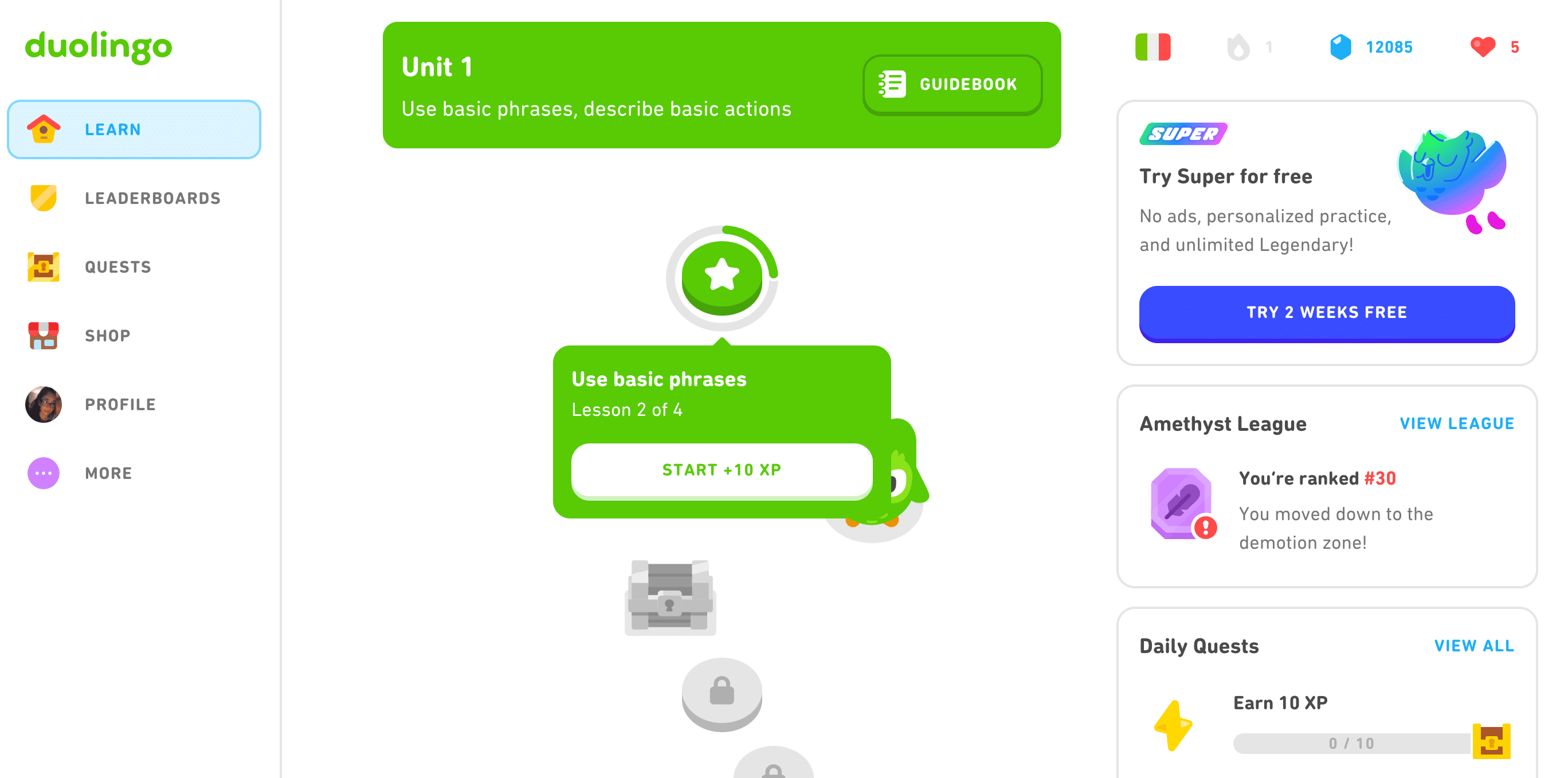
The Italian tree starts you off with the most basic vocabulary, like donna (woman) and lei (she), with the topics getting more challenging as you progress.
With Duolingo, you never feel overwhelmed—complexity is very gradually built from one lesson to the next.
One of the most important elements of the Duolingo experience is its high level of interactivity.
You’ll be doing something every five seconds. The lessons are gamified little exercises or tasks.
For example, you might be asked to pair Italian words with their English counterparts.
Or you might be shown an English sentence and asked to give its Italian translation by tapping on a specific sequence of Italian words.
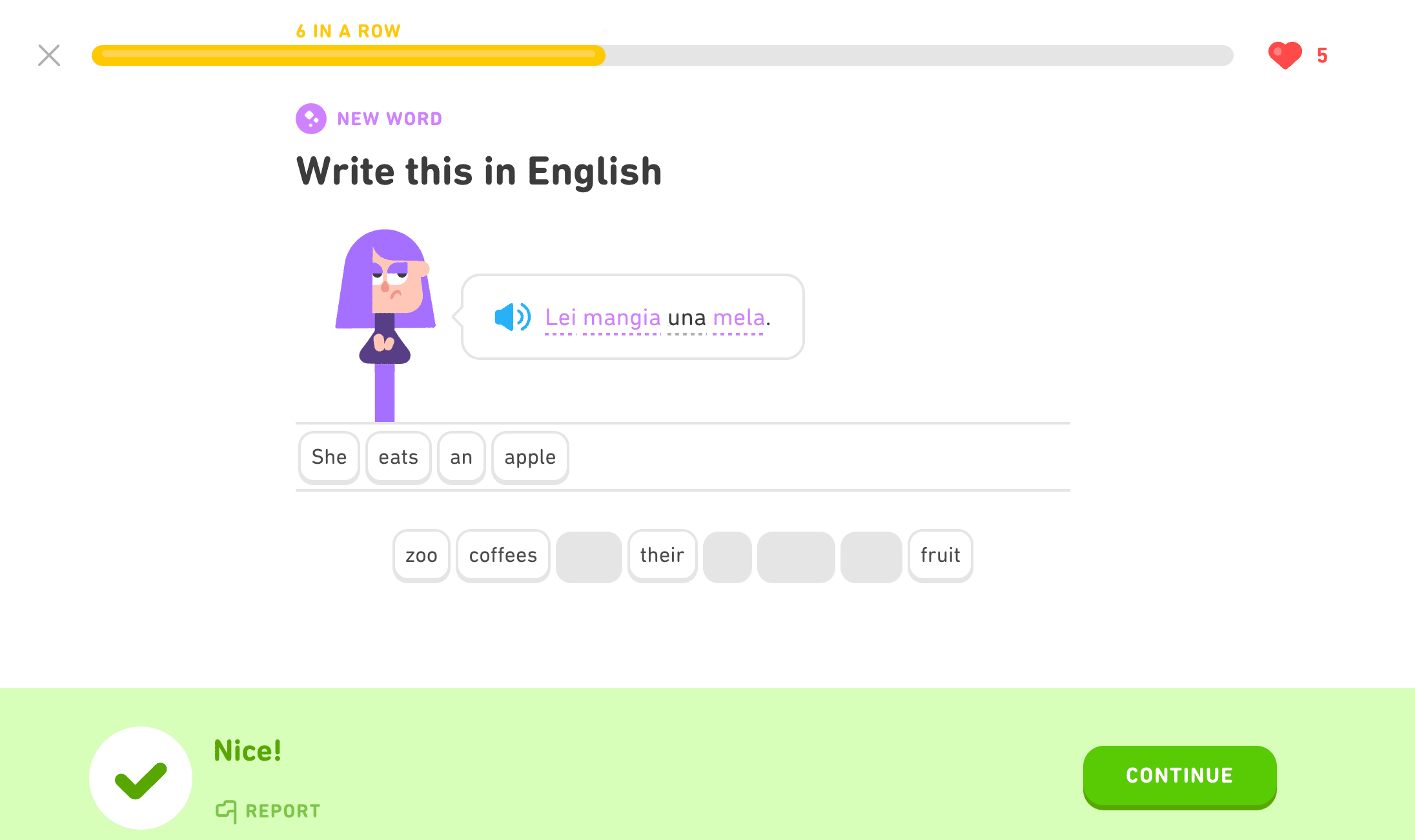
These repeating exercises are really the heart and soul of the platform.
Since Duolingo intends to develop all four linguistic competencies (reading, writing, speaking and listening), there are even times when you’re asked to speak into your phone’s mic and repeat after a prompt.
Then, the voice recognition software checks if your pronunciation is correct or not.
Duolingo is gamified language learning. Every question you answer correctly is converted into Experience Points (XP).
When you’ve finished a lesson or practiced a skill, your XP increases accordingly. (You can set a daily XP goal in the Settings section.)
There’s a leaderboard so you can gauge your performance vis-à-vis other students.
Gems known as “lingots” are the platform’s currency.
You earn lingots for completing tasks like maintaining a 10-day practice streak, reaching your practice goals or inviting friends to use Duolingo.
Lingots can be used in the virtual shop where you can buy “power-ups” like “Streak Freeze” or “Double or Nothing.”
“Streaks” refers to the number of days you’ve consecutively met your XP goals. While XP reflects how long you’re studying in a day, “Streaks” tells you how often you’re studying.
This is really the most important metric for you because it reflects just how consistent you are at studying Italian.
One of the challenges for platforms like Duolingo is to reconcile the different goals and objectives of many different Italian language learners.
Some casual learners simply want a fun time working through the Duolingo tree. Then there are those serious learners who want more in-depth content.
Duolingo has resolved this with “crowns,” which essentially add a new dimension to learning.
Students can breeze through the different lessons if they like, but they can also retake the same level. Each time they do so, the exercises get a little bit more difficult.
You work through the same set of targeted vocabulary, but the tasks required get increasingly difficult.
So, maybe the sentences involved get more complex.
Or instead of tapping presented words to form the translated sentence, this time you need to type the Italian words yourself.
Every time you repeat and finish a level, you gain a “crown.” The max for each level is five crowns.
There’s probably no more robust Italian language learning community than the folks at Duolingo.
You can throw a query out there and have no shortage of replies from fellow learners.
There’s always a healthy discussion going on in the forum and simply reading the threads can be a very educational experience.
You’ll get tips on how to study Italian or be pointed to some useful resources that can get you a needed leg up.
You can also click “Report” after answering a question during your lesson if you think something is incorrect about the way Duolingo graded your choice.
One of the best things about Duolingo—and what makes it so popular—is that it’s free.
Yes, there’s a paid version that comes with no ads and unlimited hearts, but Duolingo isn’t very pushy about it.
Plus, the ads that come with the service are minimally invasive.
But as a free service, Duolingo is definitely one of the best.
The first time you use Duolingo, you immediately get a sense of its smooth graphic interface.
The layout is very intuitive.
The fonts are easy on the eyes. The colors pop but aren’t jarring to the senses. The audio is relatively crisp. The sights, sounds and movement of the elements clue you into what’s happening.
Oh, and then there’s “Duo”—the Duolingo mascot—who occasionally pops up on your screen to shout some words of encouragement.
He’s the easily recognizable green owl who’ll be your companion as you knock out one Italian lesson after another.
Duolingo makes learning Italian feel like jumping through little hoops… and liking it.
There are levels, leagues, leaderboards and lingots. There are streaks to be protected, skills to be developed and a virtual shop to be visited.
Bars are filling up, displayed numbers are telling you something.
The reward system can get you easily hooked.
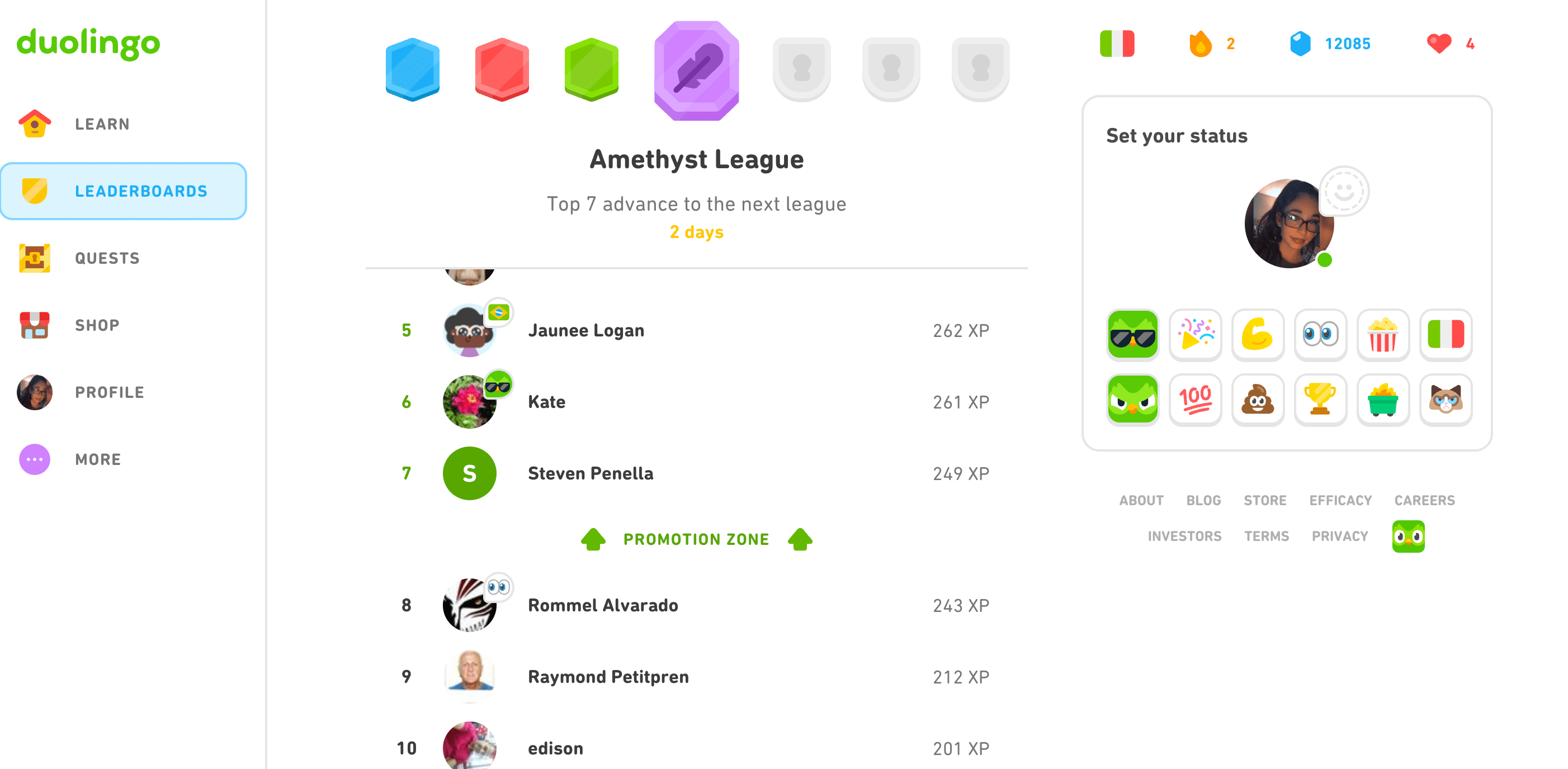
You also always know your progress in the course.
You know if your skills need practice. You know how you measure up against other Italian learners. And the way it presents this information is fun and motivational!
Granted, Duolingo Italian has a lot of room for improvement. (More on this later.)
But as a brainchild of founders with computer backgrounds, you can be sure that the platform uses the latest in machine learning and AI research to improve and keep users motivated.
And because Duolingo has some of the most vocal and passionate users, it can quickly get robust feedback on what needs to be changed.
So expect a continuous flow of improvements on the product.
Many language programs come as individually packaged courses.
So if you’re going to learn Italian, you’d have access only to that course and have to pay or install a different app to study another language.
Well, Duolingo gives you the whole shebang for free.
So, if you’re spent on Italian, you can study Russian for a bit or maybe try your hand at Japanese.
Then, suddenly, you’re sucked in and before you know it, you’re learning multiple languages at the same time.
Many Duolingo users are serial learners and the program makes it easy to give it a shot.
Duolingo has changed the game and is a hard benchmark to beat.
But that said, it’s not the perfect product either. There’s always room for improvement.
Here are a few things that the program could do better.
To be fair, there’s probably no single language learning platform or product that can be everything for everyone.
Duolingo works as part of a healthy mix of other learning materials that would have to include things like Italian textbooks , audiobooks , videos , songs , movies , language exchange websites and so on.
Duolingo has a part to play.
If you want a slew of vocabulary-building exercises that keep close tabs on your performance, then Duolingo is your best bet.
But for other things—like actual conversational practice— the platform might not be the most ideal tool.
I recommend pairing it with tools that let you put your skills to practical use, like language exchange apps or immersion programs like FluentU .
FluentU takes authentic videos—like music videos, movie trailers, news and inspiring talks—and turns them into personalized language learning lessons.
You can try FluentU for free for 2 weeks. Check out the website or download the iOS app or Android app.
P.S. Click here to take advantage of our current sale! (Expires at the end of this month.)

Try FluentU for FREE!
Yes, there are keys to Italian grammar at the start of every lesson, but these feel too “buried.”
(Many users don’t even know that they exist.)
Duolingo could do with a lot more short-but-spunky grammar explanations that are embedded in the individual questions themselves.
When you get an item wrong, you seldom know why. You’re shown the correct answer, but many users are still left guessing why their answer is unacceptable.
Duolingo can do a little more in these instances and use them as teaching moments.
I understand that the platform wasn’t designed for explicit grammar instruction, but a little more grammar explanation—like a well-placed, single-sentence pointer—can be a huge time-saver.
Duolingo doesn’t advocate simply memorizing “survival phrases,” and claims that sentence examples should be relevant and useful in the real world.
But s ome Italian example sentences are so remote from reality that you’d be hard-pressed to think of a suitable moment to use them.
They’re more useful as vocabulary teaching tools than actual commonly-used groups of words. (e.g., Lei é una donna. — She is a woman.)
Sometimes, the sentences sound like they’ve been machine-generated.
Example sentences do get better later in the course, but many users might have dropped off before getting to them.
Repetition is at the heart of learning.
But there comes a point when repetition is too much.
In the case of Duolingo, you might find the exercises begin to rub you the wrong way.
Working with the same words, phrases and sentences over and over can be demotivating.
This is alleviated by algorithms that shelf words you’ve already mastered, but I’m not just talking about vocabulary sets.
I’m also referring to things like that all-too-familiar sound you hear when you get an item right or that distracting buzz you get when you answer incorrectly.
Duolingo could mix things up better and add more variety not only to the content but even to the very mechanics of their exercises.
Duolingo is a very good vocabulary builder, but don’t expect to be fluent when you finish the course.
You’ll learn a lot, but the program won’t take you beyond the intermediate level.
Content development for Duolingo Italian may not have been as brisk as other major languages like Spanish, French, German and Portuguese.
For instance, these languages have “stories”—a feature that challenges your reading and listening comprehension and can seriously address the lack of variety we talked about previously.
Unfortunately, Duolingo Italian doesn’t have this feature yet.
Like Duolingo, Babbel has a structured, well-designed learning path for Italian that starts from the basics and gets progressively more challenging as you improve.
However, there’s a much stronger focus on grammar and the lessons go more in-depth with exercises.
They include the typical translation exercises but also practice conversations. Babbel also offers live online classes (“Babbel Live”) and a podcast.
You might choose Babbel if you want to stick with a resource that will get you to a higher intermediate level. Babbel has courses for complete newbies (A1) all the way up to upper intermediate (B2).
However, Babbel is not free and a subscription only gives you access to one language.
Like Duolingo, Memrise is completely free and is best for vocabulary building.
You can find countless premade flashcard decks—official decks made by Memrise and those made by other students—that use a spaced repetition algorithm to put new words in your long-term memory.
The Memrise official Italian courses start at Level 1 and go through Level 7.
Other decks you can find include the most common 1,000 Italian words, Italian adjectives, verbs, etc.
However, unlike Duolingo, Memrise has basically no (or at most, very limited) grammar lessons, since the courses are flashcard-based.
If you have another resource for grammar and just want to focus on rapidly growing your vocabulary, Memrise might be a better choice to Duolingo.
But if you’re starting from scratch, Duolingo will introduce you to the sentence structures you need to know first.
Most sources online agree that Duolingo can get you to an A2 (or possibly B1) level of Italian alone.
Of course, this also depends on the resources you use in conjunction with Duolingo and how often you practice outside of your study sessions.
There are currently 43 units in the Duolingo Italian course. Each has about 6-10 lessons.
Completing one unit a week would get you through the entire Italian course in 43 weeks, whereas two units a week would take 21-22 weeks.
All things considered, Duolingo Italian is an awesome tool that will build your vocabulary, teach you basic grammar and help you reach an upper beginner to low intermediate level.
Since it only takes five minutes a day, there’s simply no excuse for not working with Duolingo.
I highly encourage you to include it in your resource mix!
If you're as busy as most of us, you don't always have time for lengthy language lessons. The solution? FluentU !
Learn Italian with funny commericals, documentary excerpts and web series, as you can see here:
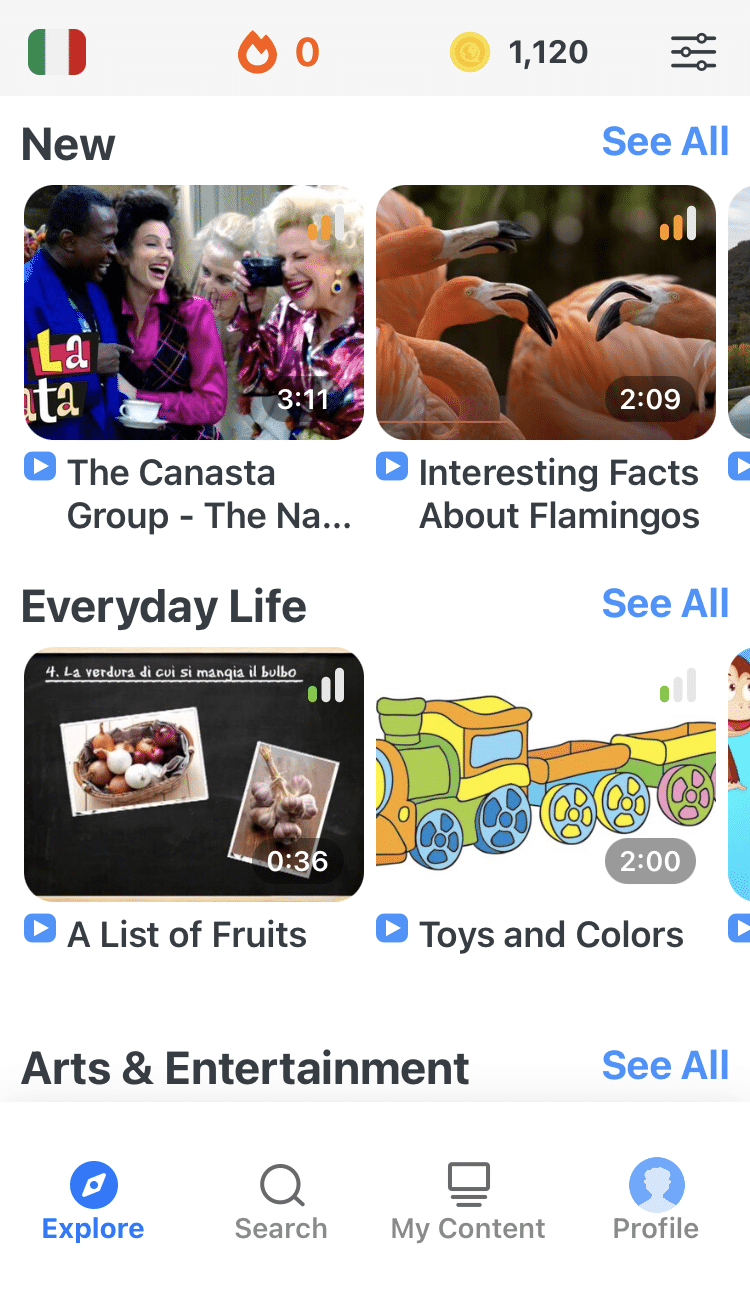
FluentU helps you get comfortable with everyday Italian by combining all the benefits of complete immersion and native-level conversations with interactive subtitles . Tap on any word to instantly see an image, in-context definition, example sentences and other videos in which the word is used.
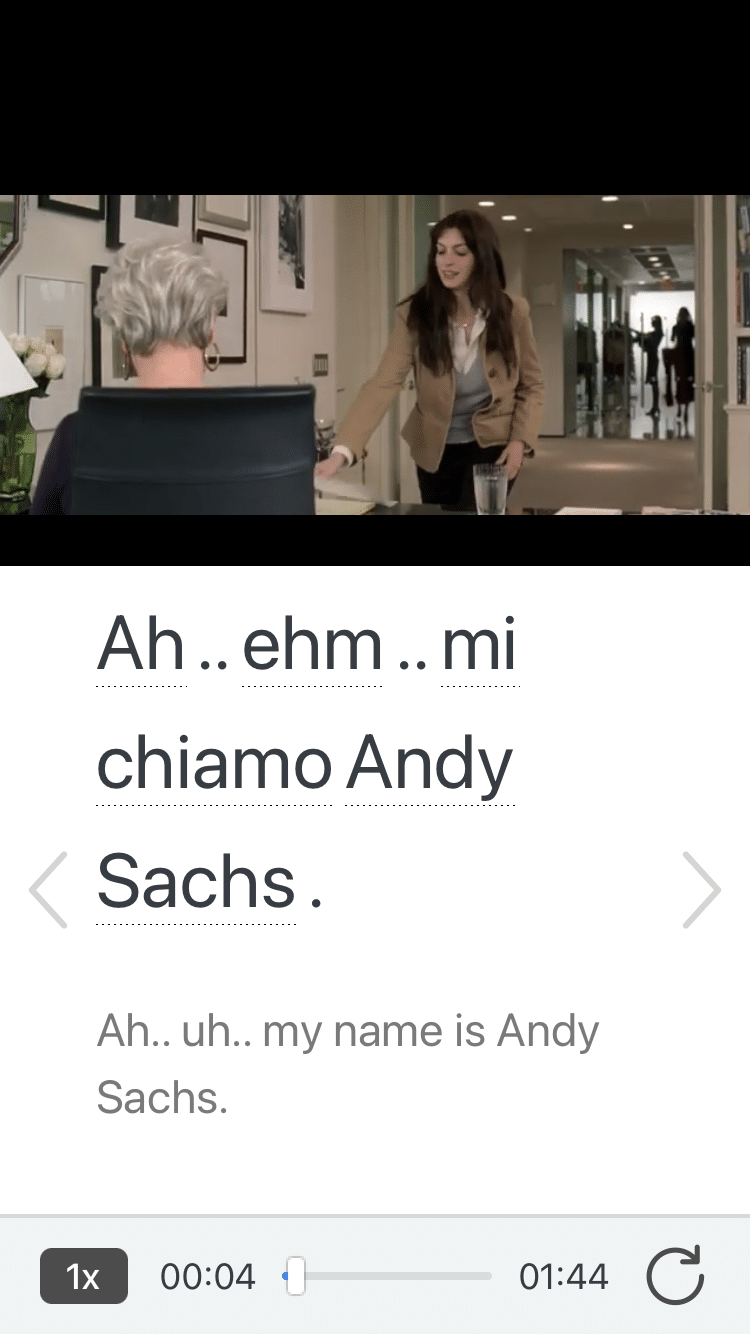
Access a complete interactive transcript of every video under the Dialogue tab, and review words and phrases with convenient audio clips under Vocab .
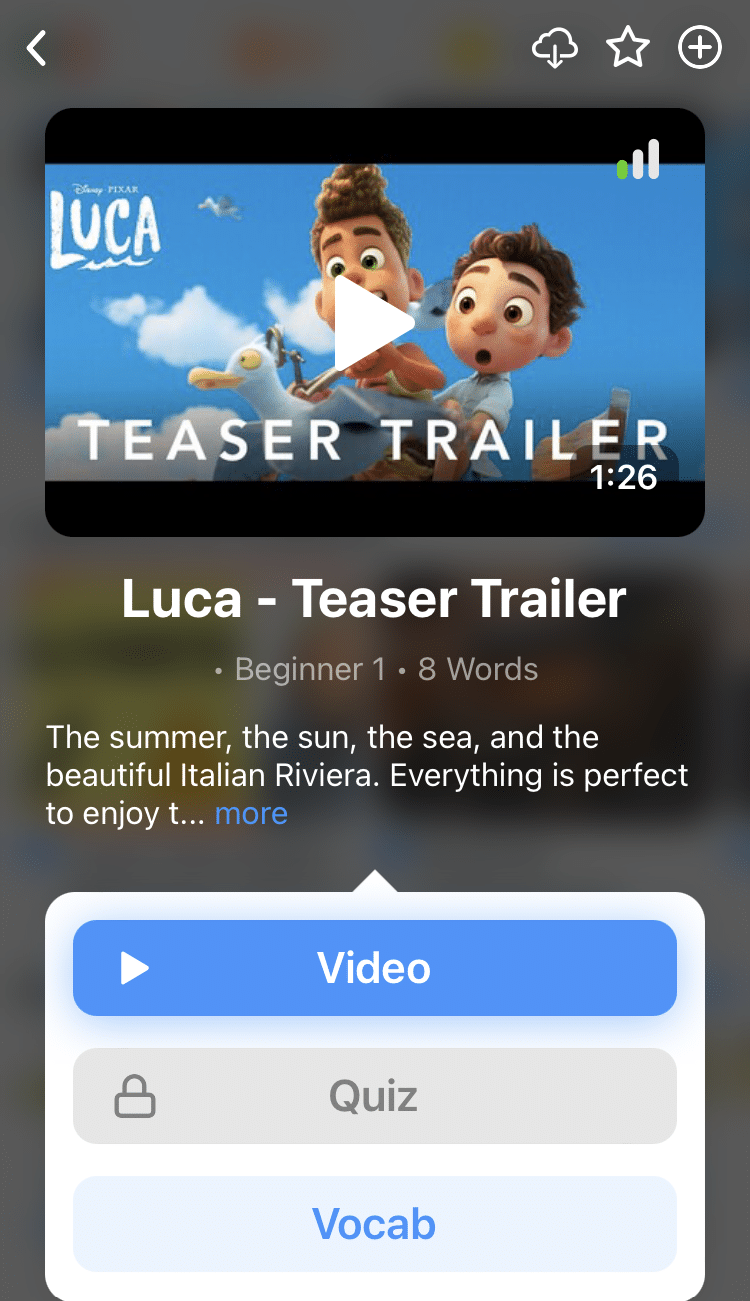
Once you've watched a video, you can use FluentU's quizzes to actively practice all the vocabulary in that video. Swipe left or right to see more examples of the word you’re on.
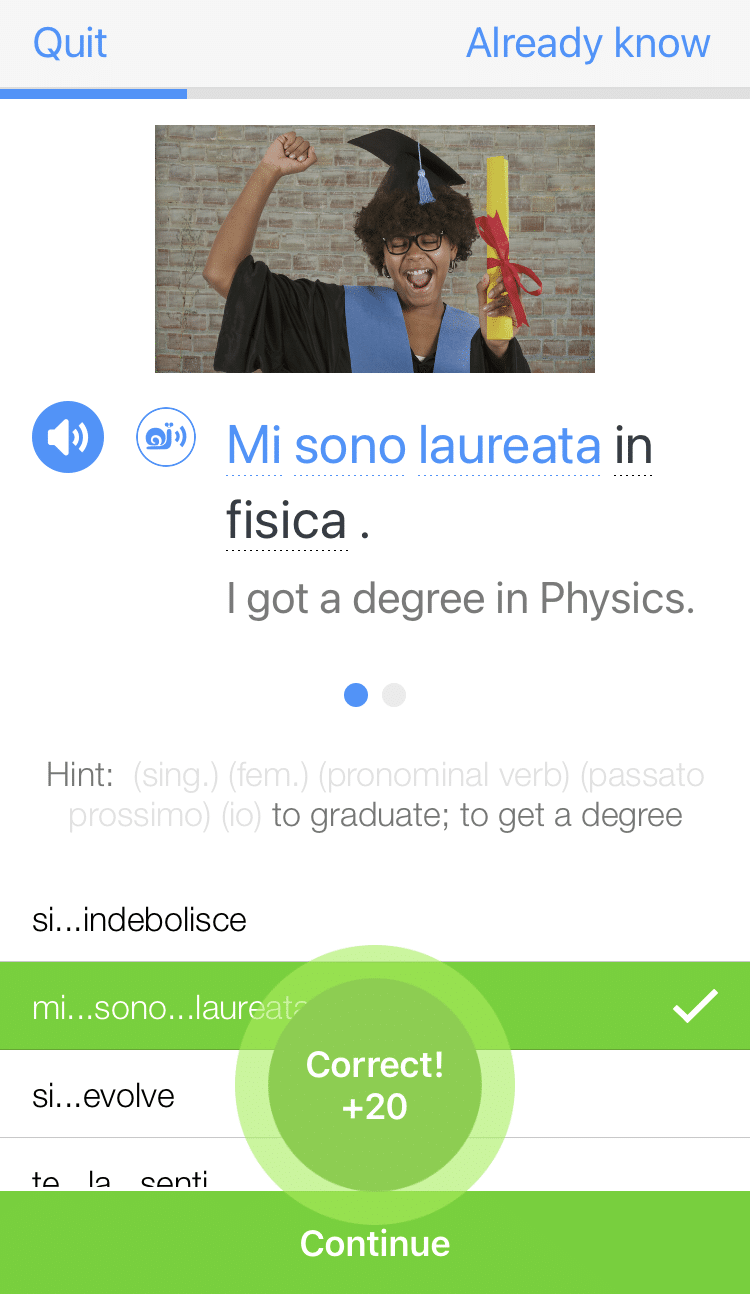
FluentU will even keep track of all the Italian words you’re learning, and give you extra practice with difficult words. Plus, it'll tell you exactly when it's time for review. Now that's a 100% personalized experience !
The best part? You can try FluentU for free with a trial.
Start using the FluentU website on your computer or tablet or, better yet, download the FluentU app from the iTunes or Google Play store. Click here to take advantage of our current sale! (Expires at the end of this month.)
Enter your e-mail address to get your free PDF!
We hate SPAM and promise to keep your email address safe


Duolingo for Italian in 2023 – EVERYTHING You Need To Know
- Posted by by Matt
- Last updated: May 21, 2023
- 9 minute read
If you’re thinking about learning Italian, then you might be wondering whether Duolingo’s Italian course is the course for you.
La bella lingua is spoken by over 66 million people worldwide. It’s an official language in several European countries and currently boasts over 6.5 million learners on Duolingo!
It also happens to be the first language I properly learned on Duolingo — so needless to say I’ve spent a lot of time with the course over the years!
But does that mean Duolingo is good for learning Italian?
In this article, we’ll cover everything you need to know about Italian on Duolingo.
We’ll look at:
- How Duolingo’s Italian course is structured
- Special features
- Other features you need to be aware of
- The pros of Duolingo’s Italian course
- The cons of Duolingo’s Italian course
Ready to dive in?
This page may contain affiliate links. This means that we may receive a commission for any sign-ups or purchases made, but at no extra cost to you . Learn more
What you’ll find in Duolingo’s Italian course
If you’re new to Duolingo, then it’s worth pointing out that all of Duolingo’s courses are structured in pretty much the same way.
There might be one or two slight differences depending on which platform you’re using. However, for the most part, they all look and work the same.
The below represents what you’ll currently find on Duolingo’s IOS app!
The Italian course follows what is referred to as the learning path .

Basically…
The path is broken up into a set of units …

Each unit has a set of levels …

Each level has a series of lessons …

And all of this is organised into a set of sections …

The basic goal is to work through the tree by completing every lesson… in every level… in every unit… in every section.
As of April 2023, Duolingo’s Italian course has a total of 51 units , spread across 4 different sections .
As you move through the path, you’ll get opportunities to complete some timed challenges by tapping on the adjacent characters …

Once you’ve completed a level, you’ll then get the opportunity to tackle an extra-hard challenge to make it legendary …

The exercises in the Italian course are basically the same as in all the other courses. Some of the common exercises you’ll come across include:
- Complete the translation
- Mark the correct meaning
- Picture flashcards
- Select the missing word
- Sentence shuffle
- Speak this sentence
- Tap the pairs
- Translation
- Tap what you hear

Does Duolingo’s Italian course have any special features?
Although English speakers can learn nearly 40 different languages on Duolingo, it’s important to point out that not all of the courses are created equally.
Some courses have special features that others don’t.
Some of these include stories , the Match Madness timed challenge, and AI-powered features (exclusive to Duolingo Max).
As of April 2023, Duolingo’s Italian course has 51 stories and Match Madness , but doesn’t currently take advantage of Duolingo Max’s AI features.
Duolingo Italian Stories
Duolingo’s Italian stories are designed to improve your reading, listening and speaking. They’re entirely in Italian and most of them are only a few minutes long at most.

They’re written for learners of all levels and come with the usual hints you find in the normal lessons.
Every now and then you’ll have to answer a question to make sure you understand what’s going on, which is a great way to measure where you’re at with your comprehension.
Match Madness
Match Madness is one of Duolingo’s main timed challenges.

It’s basically a fancy match-the-pairs exercise, where you have to match the Italian word with its English equivalent.
However, in Match Madness, you have to do this against the clock, and the time you have to complete it gets shorter and shorter in each round.
It’s a great test of your comprehension speed and has quickly become one of the Italian course’s best features!
Other features in Duolingo’s Italian course
Duolingo’s Italian course is built on the same stuff as all of Duolingo’s other language courses.
We won’t go into too much detail here, but some of the features worth knowing about include:
- XP – As you work through the Duolingo Italian course, you’ll earn experience points, which are more commonly known as XP. You’ll earn XP for pretty much everything you do. Some lessons, tasks and exercises will earn you more XP than others.
- Leagues – Every week you’ll be entered into a league with other Duolingo learners. There are 10 leagues to work through, starting at Bronze and ending at Diamond. The leagues are basically leaderboards — simply earn more XP than others in your league to have a chance of winning.
- Gems – XP isn’t the only thing you’ll earn as you learn Italian. You’ll also earn gems, which you can spend in the Duolingo Shop . There isn’t really much you can buy here, but you can use your gems to pick up things like Streak Freezes and Timer Boosts for timed challenges.
- Friends – Duolingo is a social experience, so you’re able to follow other users and compare your progress. The guys at Duolingo reckon you’re 5 times more likely to finish your course if you follow people! To get you started, feel free to give me a follow — my username is DCiiieee !
- Duolingo Plus / Super – This is Duolingo’s premium membership. Pay for Plus/Super and you’ll get access to some useful features, including unlimited hearts , no ads and Practice Hub .
Is Duolingo good for learning Italian?
Now to answer the all-important question:
To answer this, let’s weigh up some of the pros and cons.
Beginner-friendly
Learning a new language can be pretty intimidating, especially if you only speak English.
This is why one of the nicest things about Duolingo is just how accessible and welcoming it is.
Regardless of the language you’re learning, Duolingo presents its courses in a really warm, vibrant and inclusive way. So whether this is your second language or your tenth, you can feel at ease straight away.
Fortunately for English speakers, Italian’s probably one of the easier languages to learn as well. You don’t have to worry about things like cases or different writing systems, and the pronunciation isn’t *that* difficult once you get used to rolling your R’s!
Duolingo makes this even easier with the way it presents its courses. You’ll find helpful guidebooks in every unit, and if you’re stuck on a question you can just tap the words for some hints.
Duolingo’s Italian course also comes with the usual placement test when you first start, so you can rest assured you’ll start your tree from a place you find comfortable.
This is one of Duolingo’s standout features and it’s only available in a few of its courses.
Fortunately, Italian is one of them!

One of the best things about the Italian stories is that they’re genuinely interesting and funny as hell! Duolingo have got some seriously great writers!
They’re so good that reading them doesn’t feel like work. Yet all the while your reading and listening comprehension is going up, up and up!
And while the stories aren’t up to the same standard as some of Duolingo’s other courses (we’ll get to that in a sec) they’re still a HUGE selling point for the Italian course.
I highly recommend getting stuck into them as soon as you can!
Related: Duolingo Stories – The COMPLETE Guide – What You Need To Know
This doesn’t just go for Duolingo’s Italian course, it’s the same for ALL of them!
One of the best things about Duolingo is that it’s more than just a language-learning tool.
It’s also a game . And although this isn’t to everyone’s liking, it’s a big part of why so many people show up every day to do their daily lessons.
For everything you do in Italian, you’ll earn XP (experience points) which contribute towards your position in the weekly leagues.

Now this isn’t something you should take too seriously (you can read more about why here ) but if you take it lightly it’ll definitely make your Italian a lot more enjoyable.
Because ultimately, the more you enjoy something, the more likely you are to do it. And given learning Italian will require you to show up regularly for a very long time, Duolingo could be the perfect solution.
Another great thing about Duolingo is that the Italian course is 100% free .
There is a premium subscription, but this isn’t something you need in order to complete the course. The whole thing is completely free; Plus/Super just adds a few features that make things a bit smoother.
This is great if you’re just dabbling with Italian and aren’t ready to commit just yet. But also if you’re keen to get started with the language but don’t want to fork out on special software or tuition.
Super motivating
I take it you’ve seen the owl memes?
Yes, the owl can be *a bit* of a stalker at times, pestering you at all hours to do your daily Italian lessons!
But relax, contrary to popular belief, he’s not gonna kidnap your family anytime soon!
Jokes aside, Duolingo is brilliant for keeping you motivated .
Learning Italian takes time. It’s not something you’re going to pick up overnight.
According to the US Foreign Service Institute , it takes roughly 600-750 “class hours” to reach “Professional Working Proficiency” in Italian.
So yeah, if you’re going to learn Italian, you’ve got to be in it for the long haul!
That means creating an unbreakable habit. And Duolingo’s amazing for doing that.
Put it this way — my current streak (i.e. the number of days in a row I’ve used Duolingo) goes all the way back to May 2016.
And that’s not just because I’m a bit obsessive! It’s thanks to Duolingo being such a great way of keeping me motivated!
Really short course
Although Italian is currently Duolingo’s 7th most popular course, the course itself is really short .
It only has four sections, which is only half of what you get in courses like French and Spanish.
While the course comes with a chunky 51 units, realistically you could plough through them in a pretty short time.
I first completed the Italian course back in 2016 and I managed to get it done in about a month. And even though Duolingo have updated it quite a bit since then, it’s still a bit thin.
This means that although Duolingo is great for getting started with Italian, eventually you’ll need to look further afield if you want to make significant progress.
Not great for speaking
This is the case for most of Duolingo’s language courses.
Duolingo is brilliant for getting to grips with the listening and reading side of a language. You even get opportunities to practice your pronunciation.
But when it comes to speaking in a real-life scenario, Duolingo’s Italian course won’t get you there by itself.
The problem is the speaking exercises aren’t conversation exercises. You get a little bit of practice in the conversation mode on the stories (if available), but this just involves reciting what the characters say. You don’t actually come up with your own responses.
Speaking is a skill in its own right and to learn it you’ll need to practice it regularly, ideally with a native speaker, or at the very least using a program that has conversation scenarios (such as ItalianPod101 ).
Stories aren’t as good as in other courses
I was really excited to see stories come to the Italian course back in 2021. Considering how popular the course is, they were definitely overdue.
And while they undoubtedly improve the course, unfortunately, they don’t hit the heights of the stories in other courses, such as French, Spanish and German.
One reason is there just aren’t that many. As of April 2023, there are only 51 — which is pretty low compared to the French course, which has nearly 300!
Another reason is they just don’t read as well as in some of the other courses. The French stories are full of life with real voices. Whereas the Italian stories sound as though they’re being read by robots.
They’re still good, but they could be so much better.
If you’ve read any of my other articles then you’ll know one of the things I dislike most about Duolingo at the moment is the heart system .
Hearts are basically lives or chances. You start off with 5 then lose one every time you make a mistake.
If you lose all your hearts then you’re not allowed to progress through your course until your hearts replenish.

You can either watch an ad to get one back, do a practice session, spend some gems or wait 5 hours.
It’s far from ideal as it does the unhelpful thing of punishing you for making mistakes .
Which, as far as I’m concerned, is ridiculous as mistakes are absolutely essential and unavoidable when learning a language.
If you’re a total beginner or simply on the fence about learning Italian, then Duolingo’s Italian course is definitely a great place to start.
You’ll learn the basics of the language, get to grips with the pronunciation, pick up a nice chunk of useful vocabulary, and see the language in action in 51 mini-stories.
You’ll also have a blast working through the course as you compete in the weekly leagues and alongside your friends!
By the end of the course, you’ll definitely be more advanced than when you started.
However, given that the course only has 4 sections, you’ll need to use other resources as well if you want to reach fluency.
By itself, Duolingo’s Italian course could probably get you to an A2 level in reading and listening (so long as you’re doing enough passive learning as well).
A good tool to use — either alongside Duolingo or after you’ve completed the course — is ItalianPod101 .
ItalianPod and Duolingo complement each other beautifully, as they both target areas that the other misses. Duolingo is great for reading and typing things out, whereas ItalianPod is brilliant for improving your listening and speaking.
With ItalianPod you’ll also get essential resources like grammar packs, cultural insights, and learn the 2,000 most common Italian words — so by the end of the course, you should be able to understand as much as 80% of all Italian conversations.
When used together, Duolingo and ItalianPod will give you everything you need to reach a comfortable level in Italian.
If you’re new to Italian…
I’d highly recommend taking Duolingo’s placement test, figuring out what level you’re at, and then working through the first couple of units. This will get you familiar with the basics of Italian.
At the same time, I’d recommend taking advantage of ItalianPod’s free trial to get familiar with how the language sounds, pick up some useful phrases and cultural insights, and practice speaking as soon as possible.
Once you’ve worked your way through the Duolingo course, I’d recommend coming back to it daily to keep the streak alive (habit is SO important when learning a language) and start to move through the intermediate to advanced packs on ItalianPod.
Finally, make sure you’re getting enough passive exposure to Italian as well. It’s really important to experience the language in an authentic environment — so things like TV shows, music, books, real-life conversations — so you can see how everything you learn on Duolingo and ItalianPod works in the real world.
Hey! I'm Matt, the Duolingo-nut behind duoplanet. I started using Duolingo back in 2014, and my current streak stretches all the way back to May 2016. Using Duolingo I've reached a comfortable level in Italian and acquired a basic understanding of Russian. I've also gone deep into the Spanish, German and French courses, and intend to explore more languages in the years to come. Needless to say, I'm obsessed with language learning!
Post navigation

Duolingo for Russian - EVERYTHING You Need To Know

Duolingo for German in 2023 - EVERYTHING You Need To Know
Leave a comment, leave a reply cancel reply.
Your email address will not be published. Required fields are marked *
Save my name, email, and website in this browser for the next time I comment.
related posts

Duolingo Stories in 2024 – EVERYTHING You Need To Know
- 5 minute read

The Complete List of EVERY Duolingo Language in 2023
- 4 minute read

What Level Is Duolingo Italian? A Comparison With Language Proficiency Levels
If you are you considering the Italian course in Duolingo but are not sure if it is the right level for your Italian, then you are in the right place.
This article will detail what level of Italian each Duolingo section corresponds to, so you will get an understanding of what material the Duolingo Italian tree contains and how complex it is.
Keep reading to find out more!
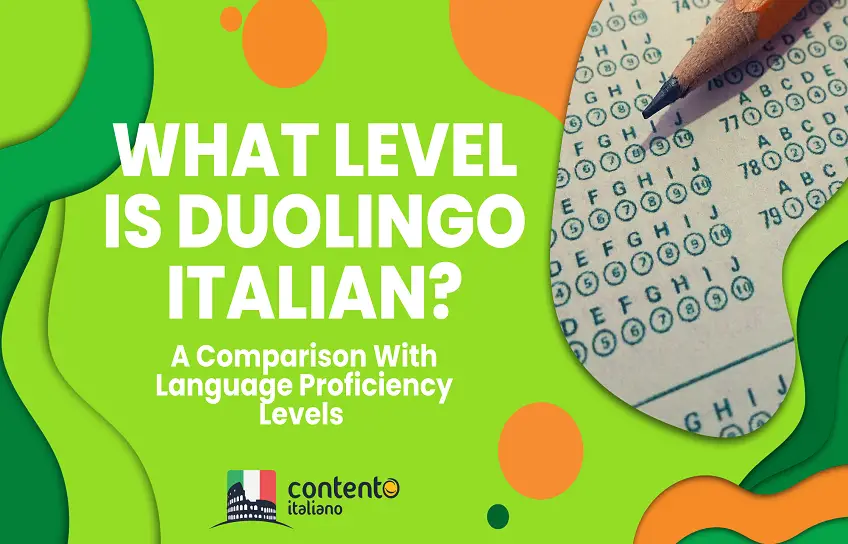
Table of Contents
What level are the duolingo italian lessons, how does the duolingo italian course relate to language proficiency levels, how advanced is the duolingo italian course, can the duolingo italian course make me proficient, which italian tenses will i learn in duolingo italian, is the duolingo italian course suitable for beginners.
Proficiency in a language is often classified according to the Common European Framework of Reference for Languages (CEFR) . Within the framework, there are six levels of proficiency. These are:
- A1 Beginners
- A2 Elementary
- B1 Intermediate
- B2 Upper Intermediate
- C1 Advanced
- C2 Proficiency
The Duolingo Italian course is divided into four sections ( click here to find out about number of lessons, crowns, skills, levels, etc… ).
In the table below, we have summarized the contents of the Duolingo Italian lessons within each section of the Duolingo Italian tree. We have also related the level of each Duolingo section to the European Framework for language proficiency.
This should help you to gain an understanding of what each section of the Duolingo Italian course will cover and what level of language proficiency you could expect to achieve from it.
How many of these questions can you get right?
(answers with explanations show here after you press submit).

Time's up
The contents of the Duolingo course can only be very loosely related to CEFR levels. This is because each of the CEFR levels for Italian (A1, A2, B1, B2, C1, C2) is very much focused on conversational aspects, such as being able to exchange information about a variety of matters with another person and being able to hold a conversation on both practical and abstract subjects.
On the other hand, due to being an app, Duolingo’s ability to teach conversational Italian is very limited.
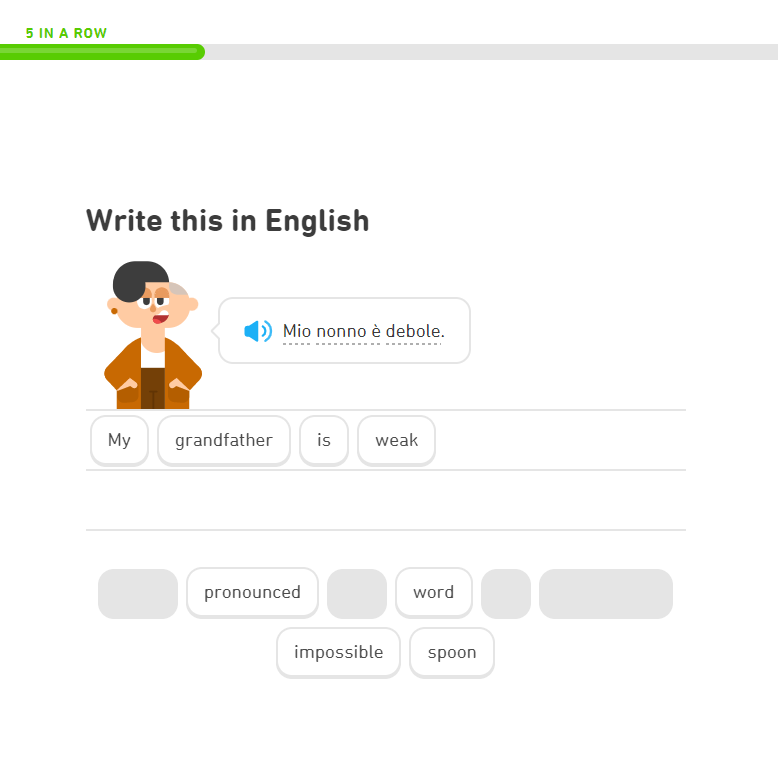
A scientific study found that the language proficiency gained by completing seven units of the French or Spanish courses in Duolingo was equivalent to four semesters of University study for reading and listening skills. Interestingly, the study was around reading and listening skills only, but did not focus on speaking skills.
Although the Italian Duolingo course covers a lot of material in a small number of sections , it is unlikely for a student to become fluent in Italian by using Duolingo alone.
The Duolingo Italian course packs a lot of complex grammar topics within its four sections , and therefore could be considered to teach up to an advanced level in Italian . However, it is very unlikely that someone could become proficient in Italian by using Duolingo alone.
Here are two examples of very advanced topics:
- The subjunctive mood (present and perfect tense) (Duolingo section 4)
The subjunctive is an extremely complex topic to understand, particularly for English speakers, because no such verb mood exists in English.
The subjunctive mood is used for verbs which are within subordinate clauses, like in the sentence “I don’t know if she has arrived”, where “if she has arrived” technically requires the subjunctive mood in Italian because it is a subordinate clause to “I don’t know”.
In practice, there are many instances where native Italian speakers themselves replace the subjunctive mood with the indicative mood, particularly in spoken Italian.
The subjunctive mood is becoming increasingly less used in spoken Italian, so a learner of Italian should learn this mood gradually and not worry about being incorrect if they avoid using it until they feel comfortable doing so.
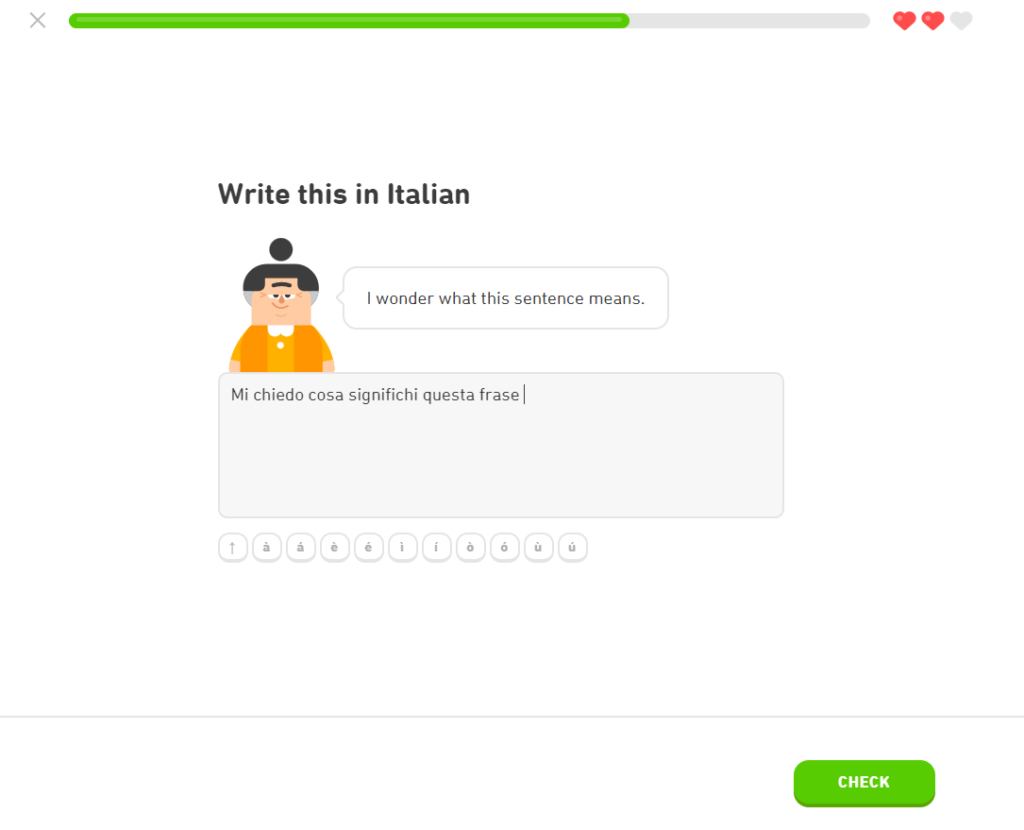
By focusing too much on the Italian subjunctive mood, there is a risk of discouraging the learner and making their learning experience too much of a memory exercise, with them having to memorize yet another tense.
- The preterite past tense (Duolingo section 4)
In today’s Italian, the preterite past tense is confined to written language, and found mainly in novels and essays. The Duolingo Italian course teaches this tense, although you won’t need it in spoken Italian. It is useful to understand that it exists, however, and to be able to understand it if you are planning on reading Italian literature.
The fact that Duolingo packs a lot of grammar in a short course can leave learners of Italian feeling discouraged and frustrated about learning, and can foster the belief that Italian as a foreign language is too difficult to master.
When taken in isolation, some of the grammar topics dealt with in the Duolingo Italian course could be considered to be at level C1 and C2. They are highly complex topics and take time and practice to master. Examples are, the subjunctive mood, the preterite past tense, clitics and correct use of modal verbs.
Despite the density of grammar topics in Duolingo, it is unlikely that you will attain proficiency in Italian to genuine C1 or C2 level by completing the Duolingo Italian course alone, although Duolingo does give you a good general introduction to Italian, up to upper intermediate/ advanced level.
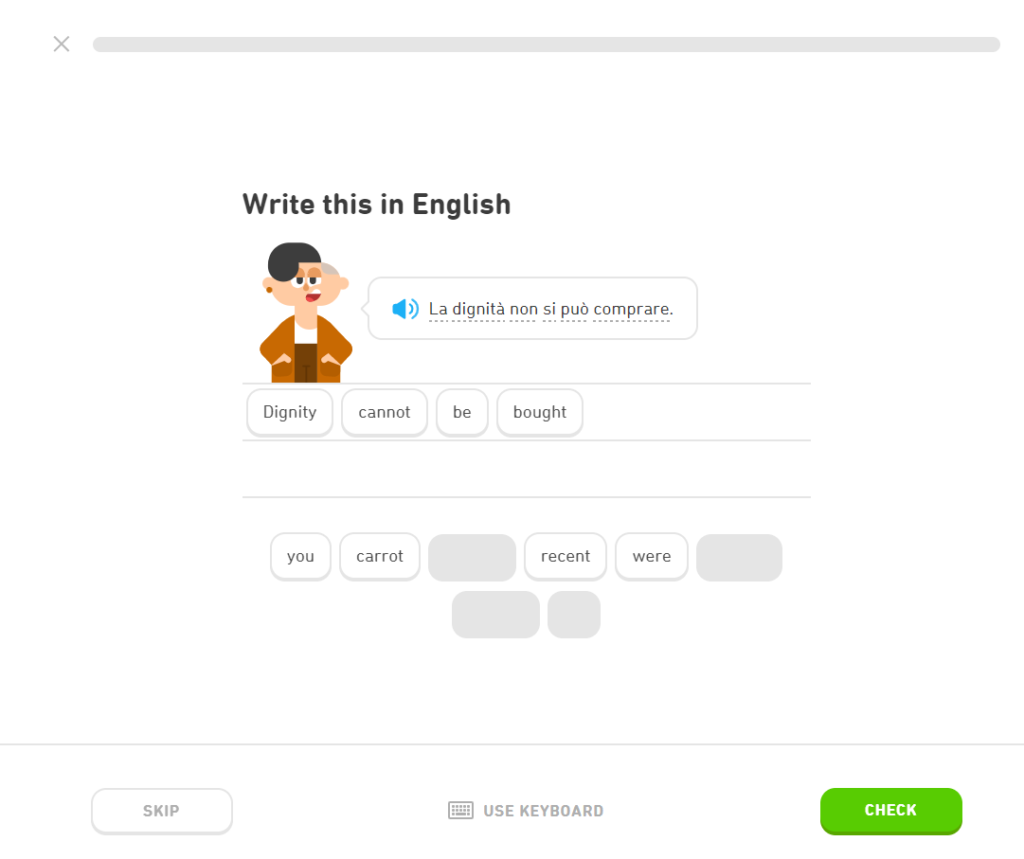
The Duolingo Italian course teaches the following tenses …
- Present tense
- Present perfect
- Imperfect tense
- Past perfect
- Future tense
- Future perfect
- Preterite past
… and the following moods:
- Conditional
- Subjunctive
The Duolingo Italian course is suitable for beginners through to advanced learners so if have no background in Italian at all, Duolingo is a very good place to start.
Section 1 and Section 2 of the Duolingo Italian tree are at beginner level, progressing to intermediate / advanced in Sections 3 and 4. Duolingo will not allow you to progress to the higher levels unless you have completed the lower levels.
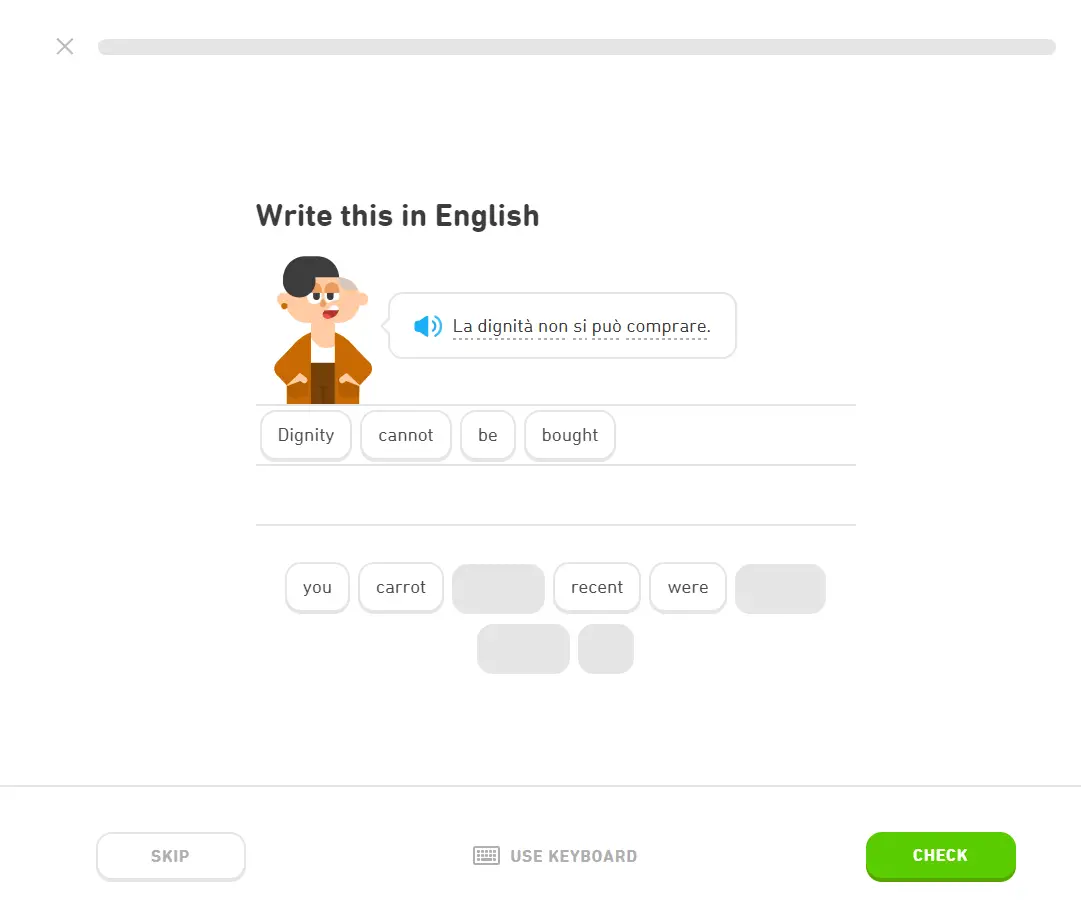
Related Posts


Does Latin Sound Like Italian?
You may have wondered if Latin sounds like Italian, and whether someone with no knowledge of Italian would be able to tell the two languages apart just based on how they sound. Overall, Latin sounds…
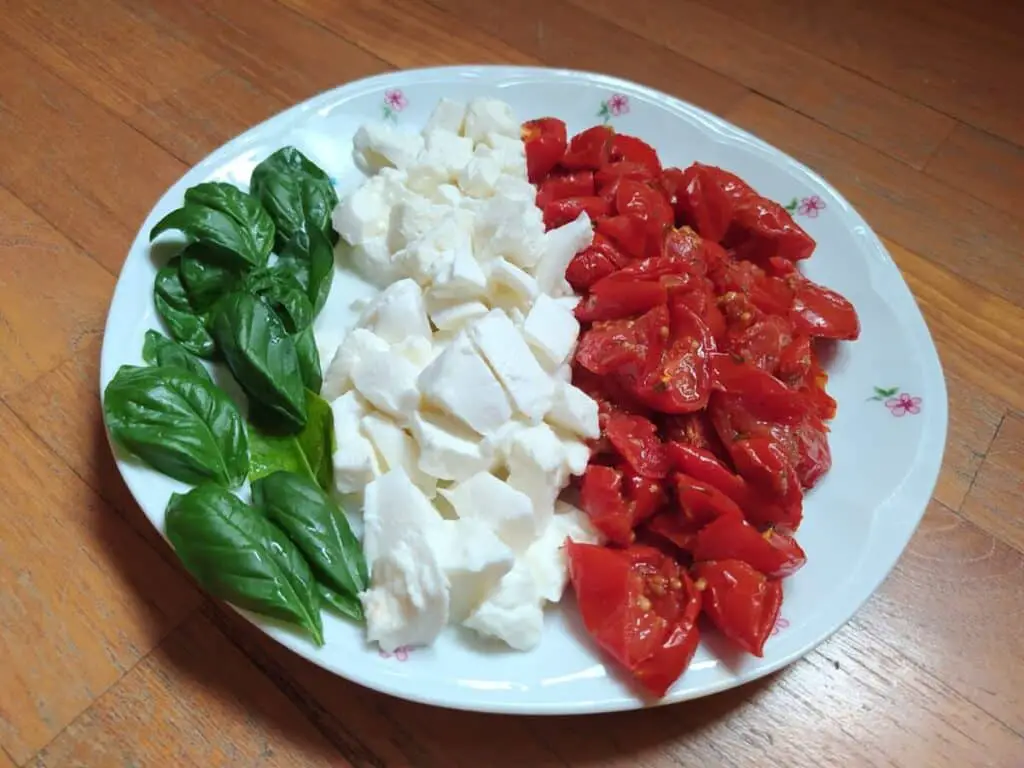
Italian Accents Compared: Which Is Best?
If you are interested in the Italian language, you might know that Italian is spoken in several different accents depending on the area. You may have wondered what is the best Italian accent? For example,…

Six Reasons Why You Should Learn Italian
Is it useful to learn Italian? Learning Italian is useful for a number of reasons, including opportunities to use Italian, benefits to your personal development and health, giving you the ability to go on holiday…

Is Learning Italian Easier Than French? – Find Out From Two Experts Who Learned Both Languages
If you are thinking of learning a new language and are wondering whether French or Italian is easier I have the answer for you. During my childhood and teenage years in Italy I studied French…

10 surprising words we added to our travel vocabulary
Before you visit a country where you don’t speak the language, how do you prepare? Do you study the words for “hello,” “goodbye,” and “excuse me”? Or do you focus on places, like “bathroom” and “hotel”?
Either way, there’s no way to learn every single word you’ll need on your trip—but you’re certain to learn at least one new word while traveling!
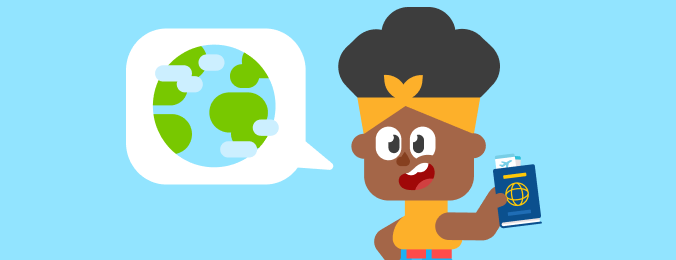
Learning something interesting about a new place, including a new vocabulary word, is one of the best parts of traveling. So we asked Duos to share the most memorable vocabulary words they learned across their travels, and their stories didn’t disappoint. From the French word for “scrambled eggs” to the Korean for “collarbone,” these words made an unexpected impact!
“I studied abroad in Italy 14 years ago, and knew ZERO Italian before living there. I quickly learned that prego means so many different things in Italian (Thank you! You’re welcome! Start eating! What did you say?) The first time I attempted to buy tomatoes from a local market, a vendor used prego , which I assumed meant I could take the tomatoes for free. It did not mean this, which became incredibly clear when the woman had her neighboring vendor chase me down to pay for the items.” —Jenelle, Marketing Program Manager
“After 11th grade, I was doing a 2-week homestay program in France with a French family, and one morning, I helped cook breakfast. I made scrambled eggs, something we all recognized but which none of us knew how to say in the other's language. I remember teaching the phrase "scrambled eggs" to my host mom in English, and she even wrote it down on a sticky note! Likewise, the French oeufs brouillés is forever ingrained in my memory because of this story!” —Evan, Operations Engineer
“On the first day of a cross-country bike trip in Korea, I got hit by a moped and broke my collarbone. I had to go to the ER and then wear a brace for months while having regular follow-ups with a doctor. I talked more about collarbones during that period than in the rest of my life combined, so the scientific Korean term for collarbone (쇄골 swaegol, from Chinese 鎖骨 suǒgǔ , literally “lock bone”) is indelibly engraved in my memory.” –Ramsey, Assessment Scientist

“I learned the word majo (charming, attractive) from my 70-year-old host mom in Spain, because we used to watch this Spanish dating show together called First Dates . She would always ask me if I thought a particular person on the show was majo . It was funny because until then I never knew how to say someone was cute like that in Spanish! I started using it all the time—I'd say Él/ella es muy majo/a !” — Sandhya, Marketing Intern
“I spent 5 months volunteering in a children's home in Nepal and learned a lot of words that I won't forget! But the words that still tug at my heartstrings are the ones the kids and I said back and forth to each other at the end of every day: Ramra sapana dekhnus! which roughly translates to "Have good dreams!"” —Skye, Senior Executive Assistant

“While traveling in Peru, I recently learned tupananchiskama , which is “until we meet again” in Quechua. I love this as an alternative to goodbye, especially in those situations when you are traveling, and connecting with people, but you have no idea when you will in fact see them again.” —Shawn, Freelance Operations Manager
“I got bronchitis while in Japan, and at the clinic I learned the word 伝染性 (densen-sei ) for "contagious," as in, “It’s not contagious” (伝染性じゃないです。 )” —Tim, Head of Original Content

“I was refreshing my French for a trip to Paris, and got annoyed that I was stuck on lessons about strikes ( les grèves ). But I practiced the word anyway. Fast forward to my trip, and what's going on in Paris? Massive garbage strikes and train strikes potentially canceling my itinerary in and out of France. At least half my communications with my Airbnb host ended up being about les grèves. I was like, “ Touché, Duo . ”” —Miranda, Software Engineer
“When I was in Japan, my host mom made me some delicious curry udon. I asked her what ingredients it had, and one of the ingredients she listed was ninniku . I had never heard this word before, but I knew nin sometimes meant "human" (人) and niku (肉) was the word for meat . I was like, “WHAT!? 人肉?” but turns out it means "garlic" (ニンニク). I'll never forget the word for garlic!” —Lu, Software Engineer
“When I studied in Copenhagen I ordered a sandwich med kylling , but pronounced it more like “killing” instead of “cool-ing.” That pronunciation makes a huge difference—my version sounded like I was asking for a kitten sandwich instead of a chicken sandwich! Now, I remember both words, and the slightly different pronunciations, by saying in my head: “Don’t kill a kitten, but chickens are cool .” —Sam, Editorial Director
Related Posts All Posts
Dear duolingo: is it easier to learn your family's language, dear duolingo: what are the different writing systems around the world.

Is Duolingo Good for Italian? – My One-Year Review
Although I have always loved Italian, learning the language really became important to me after my daughter met and married an Italian man while working in Torino, Italy. When we first met him his knowledge of the English language was already impressive and since living here in the U.K., he has achieved fluency. At the same time, my daughter has become a highly proficient Italian speaker and they are now passing on their love of the language to their young son .
I felt it essential, therefore, to achieve a better understanding of the Italian language in order to communicate with my son-in-law’s family in Italy when I visit them again. I also feel that, if I am visiting them in their country, I should make an attempt to speak their language rather than force them to speak English. I would also like to encourage my grandson as he becomes a more fluent Italian speaker. At the moment, at the age of 2 and a half, he is streaks ahead of me in his understanding and communication but I plan to remedy that!
At school, I studied French and some Latin, but the teachers emphasised grammar to the detriment of communication and I can’t remember the lessons being very enjoyable. When I started studying Italian seriously a little over a year ago, I knew I wanted to take a completely different approach to the traditional methods of study, which is why I opted for Duolingo.

Why Duolingo?
To be completely honest, I became attracted to Duolingo for two reasons: it is free, and it is fun.
The lessons can be completed in minutes and they look appealing with their colourful animated characters, most notably the iconic green owl. Each character represents a native Italian speaker: a male, a female and a child who read out the sentences. I find this is a positive way of getting our ears attuned to various Italian voices – although I do find the gruff older gentleman’s voice a bit difficult to understand at times!
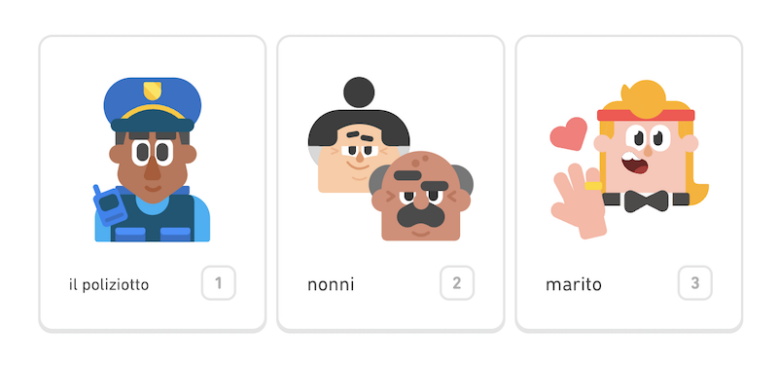
Duolingo vs Super Duolingo
The downside to not paying for Super Duolingo (formally known as Duolingo Plus ) is the necessity to watch advertisements which appear at the beginning and end of each lesson. However, most of the ads only last a few seconds, 30 at most, so it is easy to walk away, make a cup of tea, then return to start another lesson, if you so choose. You are also only allowed a certain number of mistakes before you are timed out. The time-outs usually last four hours.
Were I to sign up to Super Duolingo , I would be allowed unlimited mistakes, the possibility to track my progress, and access to lessons offline. However, for my purposes, the free version works just fine.
Note: If you are interested in giving it a try, Duolingo does offer a two-week free trial.
How to Use Duolingo
Most of the exercises on Duolingo require you to simply translate from English to Italian and vice versa. Here are some of the most common ones that you will encounter as you progress through the course:
‘Tap What You Hear’
This exercise involves inserting the correct words in the blank space. You do have to listen carefully because the difference in pronunciation of some words can be very subtle.
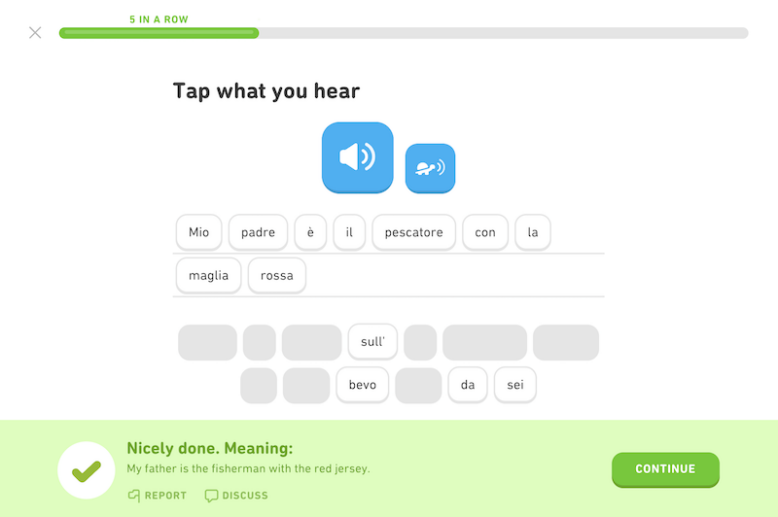
‘Select The Matching Pairs’
This exercise requires you to listen and tap the correct pairing. Five English words must be paired with five Italian words from the neighbouring column.

‘Translate this sentence – Italian to English’
This section is pretty self-explanatory – simply translate the Italian phrase into English using the available words. Not all the words are required to make the sentence; some are completely redundant and are only there to throw you off.
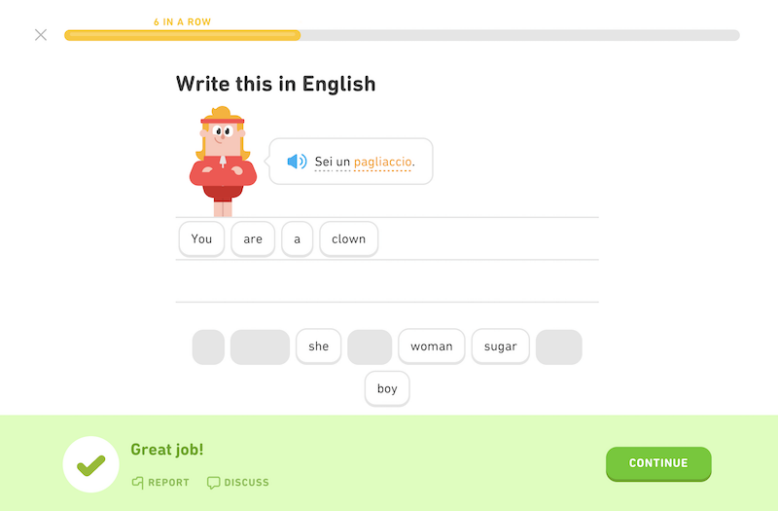
‘Translate this sentence – English to Italian’
Here you are given an English sentence and you must tap a series of Italian words to form the correct sentence. For example:

‘Speak this sentence’
If you enable your microphone, you can tap the ‘Click to Speak’ icon to record yourself speaking the Italian sentence given. The words turn blue if pronounced correctly – although I have noticed that it will usually accept my pronunciation even if it isn’t spot on!
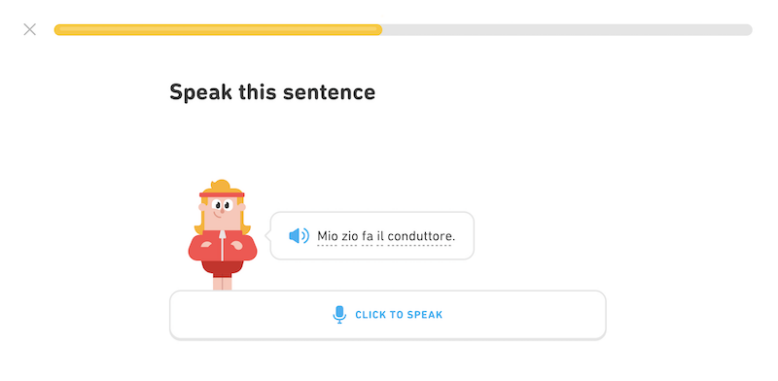
‘Multiple choice’
Here you must pick the correct translations from the three words provided.
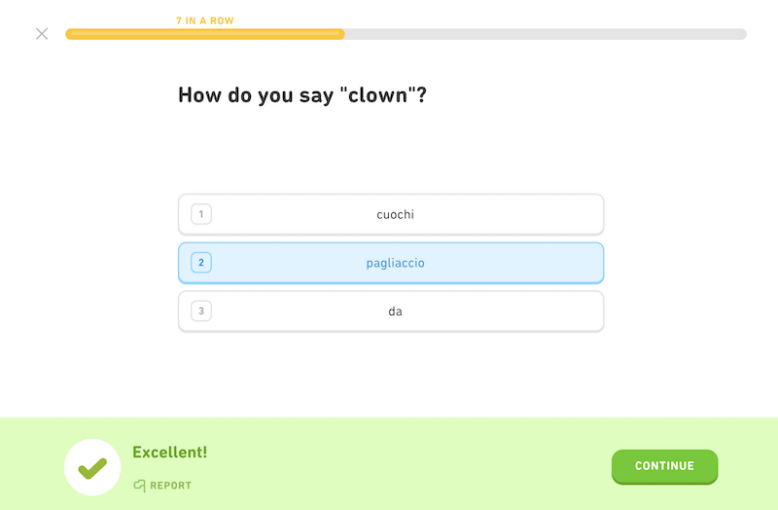
Whenever I complete a lesson, I make a note of my mistakes on a piece of paper (very old-school, I know) but I discovered that, if you click on the ‘dumb-bell’ icon, Duolingo keeps a record of all your mistakes which you can revisit at any time.
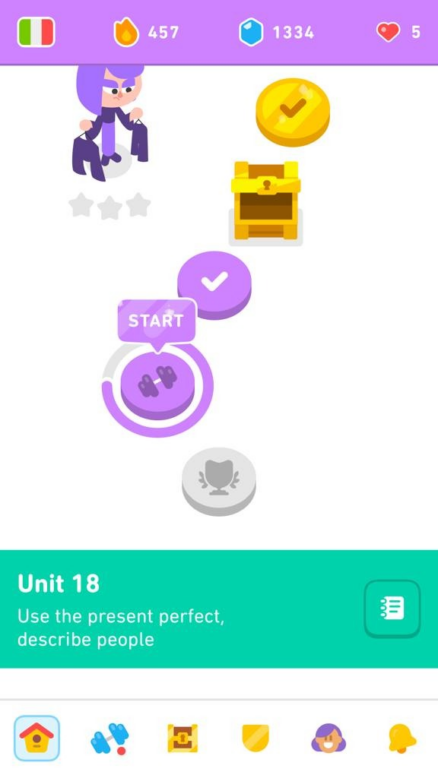
Each unit covers various topics and consists of several lessons that become more challenging as you progress through them. After completing several units and listening to a few stories you progress to a new level. There are 51 units in total consisting of 5 levels each, along with 66 skills (i.e. specific topics such as questions, adverbs, etc.) and four course sections.
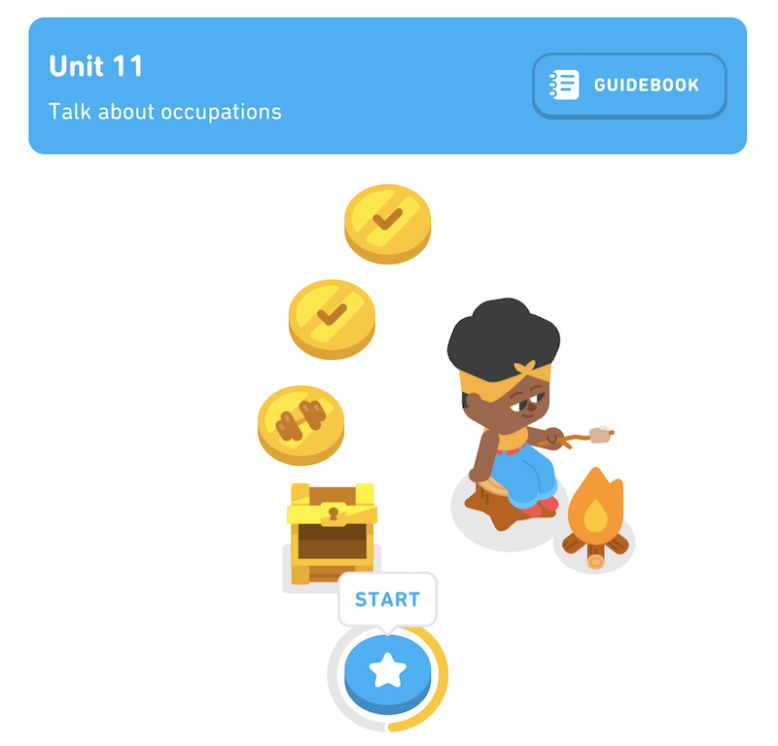
The stories are dialogues that aren’t the most thought provoking but they are fun: you have to answer ‘yes’ or ‘no’ to the questions at the end of each story. Again the dialogues help to attune your ear to natural Italian speech.
Duolingo also introduces fundamental grammar and new vocabulary in the ‘Tips’ section at the beginning of each lesson. It is important not to ignore this section because it is very helpful to help you understand and master each unit.
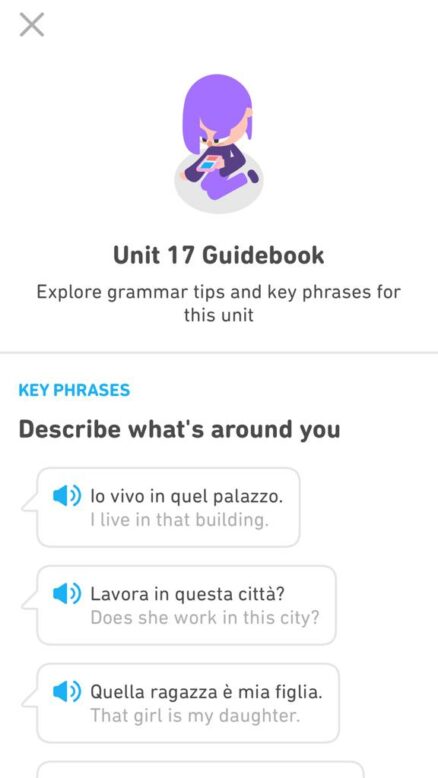
As you progress, you also receive experience points (XP) as a way of keeping you motivated. You can set a daily goal of XP you want to attain and compete with other users for a position on the XP leaderboard.

Whenever you complete a lesson, you will also receive Lingots (known as Gems on mobile), which is Duolingo’s virtual currency. You can use Lingots to buy a variety of app features, such as a streak freeze, heart refill, and streak wagers.

Duolingo also encourages you to maintain a learning streak. If you skip a day, your streak will reset. My current streak is 456 days but some of the most committed users have a streak of over 2000 days!

You also have the option of taking part in virtual meetings which are held every day, allowing you to talk to Italian learners all over the world.
What would I change about Duolingo?
Given that Duolingo is mostly run by volunteer contributors, not everything about it is perfect. For example, you may come across the occasional phrase that isn’t grammatically correct. One that surprised me in particular was the translation for “I am from England”: instead of choosing Sono inglese or Vengo dall’Inghilterra , they opted for Sono dell’Inghilterra * which sounds unnatural in Italian.
I also find some of the sentences unpractical for day-to day use. At one point, I was asked to translate the absurd phrase “ Are my shoes electric? ” into Italian. Unless they have developed some kind of new footwear in Italy that I’m not aware of, I doubt I’ll ever use this phrase in my lifetime!
I was also a little disappointed to discover that podcasts are offered in the French and Spanish versions of Duolingo but not Italian. Hopefully these will be offered in the future.
Finally, as helpful as Duolingo is for memorising new phrases and vocabulary, listening and reading, the app itself doesn’t help you much with speaking. For that, you will need to seek the help of native speakers, either by making use of Duolingo’s Classes , or by using external platforms like italki .
At the moment, I will continue studying Italian with Duolingo in the same manner as I have for over a year now as it suits my lifestyle but I realise that just studying Duolingo everyday isn’t going to make me a confident speaker.
Duolingo is an excellent accompaniment but reading in Italian , engaging in conversation with native speakers , and watching films in Italian will speed up the learning process.
I am planning a long stay in Italy in the spring. My hope is that I will be able to have a rudimentary conversation with my new Italian family. I already know that I have increased my vocabulary and that I am understanding much more since starting to study with Duolingo so we will see how I cope. I’ll keep you posted. Ciao for now!
Pros of Duolingo – most features are free – fun and visually appealing – easy to complete a lesson in just a few minutes per day
Cons of Duolingo – podcasts aren’t available – some of the sentences are strange and unpractical – you may come across the occasional grammatical error
Christine is a retired Library Technician and a lover of foreign cultures and languages. She was especially attracted to learning Italian because of the music, the culture, the food and her extended Italian family. Living in Wales, she has also been embracing the beautiful Welsh language which she is studying with Duolingo and making great progress.

Fabio Guarino is a Linguist and Language Specialist who operates as a Freelance Content Writer and SEO Marketer. He considers himself fortunate to be able to blend his passion for his native language, Italian, along with English and Spanish, with his career.
Ethics statement: Below you will find affiliate links. If you buy something after clicking the link, we will receive a small commission. To know more about our ethics, you can visit our full disclosure page. Thank you!

Lingopie (affiliate link) is the Netflix of language learning application that uses real TV shows and movies to help you learn a new language. You can choose a show to watch based on your fluency level, and use the interactive subtitles to get instant translations to help you learn quickly.

Are you interested in improving your Italian in a fun and stress-free manner? Then we highly recommend Serena Capilli's short stories in Italian (affiliate link) , designed for beginners, advanced beginners, and lower intermediate learners (A1-B1 CEFR). These stories have been optimised for English speakers in search of a fun, laid-back learning experience! Read our full review here .
Leave a Comment Cancel reply
Save my name, email, and website in this browser for the next time I comment.
Duolingo Forum
duolingo/duome forums @ duome.eu
Skip to content
- My bookmarks
- duome.eu Forums Language Discussions I speak English I'm learning... Italian
Italian course, 79 units
Post by jzsuzsi » Sun Oct 15, 2023 2:05 am
Copied from duolingodata.com
https://duolingodata.com/dat/itfen79.html
Duolingo Data: Italian from English 79 units (2023-Oct-10): Up to CEFR "A1" 766 levels ㅤ 2071 lessons ㅤ 84 Stories Path image numberOfSentences=16533 ㅤ wordsLearned=2962 (3002) ㅤ DebugNames ㅤ JSON
Units in "Section 4: Champion" have personalized names.
Section 1: Rookie (5)
CEFR Intro:
Section 2: Explorer (14)
Section 3: Traveler (43)
Path Extension Practices:
Section 4: Champion (17)
Section 5: Daily Refresh OPTIONAL
ㅤㅤ .- ㅤ Edited by Mat!/Ozone ㅤ -.
Italian translation of 'doctor'

Examples of 'doctor' in a sentence doctor

Trends of doctor
View usage for: All Years Last 10 years Last 50 years Last 100 years Last 300 years
Browse alphabetically doctor
- doctrinaire
- All ENGLISH words that begin with 'D'
Related terms of doctor
- lady doctor
- spin doctor
- family doctor
- flying doctor
- house doctor
- View more related words
Quick word challenge
Quiz Review
Score: 0 / 5

Wordle Helper

Scrabble Tools


(by DuoItalian)
This lesson provides some basic vocabulary on means of transportation in Italian, which might be useful for a trip to Italy. Also included are some basic introduction sentences.
- Di dove sei? (Where are you from?)
- Sono italiano, di Milano. (I am Italian, from Milan.)
- Roberto è spagnolo, di Madrid. (Robert is Spanish, from Madrid.)
TIP : The Italian adjective straniero (foreign) can also be used as a noun ( il straniero meaning “foreigner”)
For additional information, visit the DuoItalian page on Travel Phrases .
(from Duolingo)
Study and Test Yourself
Leave A Comment Cancel reply
You must be logged in to post a comment.
- Cambridge Dictionary +Plus
Translation of doctor – English–Italian dictionary
Your browser doesn't support HTML5 audio
(Translation of doctor from the Cambridge English-Italian Dictionary © Cambridge University Press)
Translation of doctor | PASSWORD English-Italian Dictionary
(Translation of doctor from the PASSWORD English-Italian Dictionary © 2014 K Dictionaries Ltd)
Examples of doctor
Translations of doctor.
Get a quick, free translation!

Word of the Day
anonymously
without the name of someone who has done a particular thing being known or made public

Dead ringers and peas in pods (Talking about similarities, Part 2)

Learn more with +Plus
- Recent and Recommended {{#preferredDictionaries}} {{name}} {{/preferredDictionaries}}
- Definitions Clear explanations of natural written and spoken English English Learner’s Dictionary Essential British English Essential American English
- Grammar and thesaurus Usage explanations of natural written and spoken English Grammar Thesaurus
- Pronunciation British and American pronunciations with audio English Pronunciation
- English–Chinese (Simplified) Chinese (Simplified)–English
- English–Chinese (Traditional) Chinese (Traditional)–English
- English–Dutch Dutch–English
- English–French French–English
- English–German German–English
- English–Indonesian Indonesian–English
- English–Italian Italian–English
- English–Japanese Japanese–English
- English–Norwegian Norwegian–English
- English–Polish Polish–English
- English–Portuguese Portuguese–English
- English–Spanish Spanish–English
- English–Swedish Swedish–English
- Dictionary +Plus Word Lists
- English–Italian Noun
- PASSWORD English–Italian Noun Verb
- Translations
- All translations
To add doctor to a word list please sign up or log in.
Add doctor to one of your lists below, or create a new one.
{{message}}
Something went wrong.
There was a problem sending your report.

IMAGES
VIDEO
COMMENTS
The world's most popular way to learn Italian online. Learn Italian in just 5 minutes a day with our game-like lessons. Whether you're a beginner starting with the basics or looking to practice your reading, writing, and speaking, Duolingo is scientifically proven to work. Bite-sized Italian lessons. Fun, effective, and 100% free.
These phrases will surely come in handy in your life. Take advantage of our online lesson - simple conversation between doctor and patient in Italian - and be sure that in case of any health problems you will reach an agreement with a doctor in a foreign country 🙂 After watching our film - At the Doctor's - a medical visit will not ...
It has to be supplemented with regular speaking and some other auditory practice to become a good speaker. I could read Italian very well when I was done, but couldn't speak all that well. Watch videos, talk to natives, and listen to music. If you want a further challenge on Duolingo then change your settings to learn English as an Italian speaker.
Duolingo is the world's most popular way to learn a language. It's 100% free, fun and science-based. Practice online on duolingo.com or on the apps! Learn languages by playing a game. It's 100% free, fun, and scientifically proven to work. Duolingo is the world's most popular way to learn a language. ...
Dutch Ik ga naar de dokter. Icelandic Ég fer til læknis. Indonesian Aku pergi ke dokter. British English I go to the GP. Mexican Spanish Yo voy al médico. European Portuguese Eu vou ao médico. Cantonese Chinese 我去看醫生。. Thai ฉันไปหาหมอ. Polish Idę do lekarza.
Do you want to learn a new language for free, fun and science-based? Duolingo is the world's most popular language learning platform, with courses in over 40 languages, interactive exercises, and a supportive community. Whether you want to practice online, on your phone, or with a podcast, Duolingo has something for you. Join millions of learners today and discover how Duolingo can help you ...
Summary. Duolingo Italian is an awesome tool that can take you places other platforms and apps can't. Even with its cons (from impractical sentences to gaps in grammar explanations) it's still one of the most useful tools out there for learning Italian. User friendliness - 9/10. 9/10. Delivers on promises - 8/10. 8/10. Authenticity - 8/10.
NOTES (from Duolingo) There are three ways to specify an occupation in Italian: Fare + determinate article + profession (e.g. Faccio il medico): by far the most common way.It describes the person's current role as an activity. Essere + indeterminate article + profession (e.g. Sono un medico - I am a medic): similar to the English construction, it describes the person's professional category.
Present (Verbs) 2. Duolingo Review. NOTES (from Duolingo) The verb "mancare" when referring to people, works like "piacere": the indirect object misses the subject. [...] Read More. 6. 1 2 Next. English to Italian Practice Site.
I studied Italian for 365 days straight and here is my honest review. Progress. Here is a short story: one year ago me and my friend decided to go on this challenge of using Duolingo for as long as possible to learn how useful can the app be. I completed the challenge and here is the balanced review. Please note that I had no prior experience ...
3rd person singular (him, her, formal you) lui, lei, Lei. 3rd person plural (them) loro. Except for "me" and "te," these are the same forms as the subject pronouns. Going back to "Vedo la ragazza," we can say "Vedo lei ," if we want to emphasize that it is her (not someone else). 2) Indirect objects.
The basic goal is to work through the tree by completing every lesson… in every level… in every unit… in every section. As of April 2023, Duolingo's Italian course has a total of 51 units, spread across 4 different sections. As you move through the path, you'll get opportunities to complete some timed challenges by tapping on the ...
That being said, many users have reported that they have managed to learn the basics of Italian in just a few weeks with the help of Duolingo. Many different factors affect how long it takes to learn a language, and each person is different. These factors include your age, the amount of time you dedicate to studying each day, and your learning ...
The Duolingo Italian course is suitable for beginners through to advanced learners so if have no background in Italian at all, Duolingo is a very good place to start. Section 1 and Section 2 of the Duolingo Italian tree are at beginner level, progressing to intermediate / advanced in Sections 3 and 4.
10 surprising words we added to our travel vocabulary. by Sam Zabell. Before you visit a country where you don't speak the language, how do you prepare? Do you study the words for "hello," "goodbye," and "excuse me"? Or do you focus on places, like "bathroom" and "hotel"? Either way, there's no way to learn every single ...
Duolingo is an excellent accompaniment but reading in Italian, engaging in conversation with native speakers, and watching films in Italian will speed up the learning process. I am planning a long stay in Italy in the spring. My hope is that I will be able to have a rudimentary conversation with my new Italian family.
NOTES (by DuoItalian) Healthcare is considered a right in Italy and the country has a national health plan which is designed to provide for all Italian citizens and residents, including U.S. and Canadian citizens who are legal residents of Italy. The healthcare costs are reportedly reasonable, with varying costs based on a number of factors
The individual plan is pretty affordable and only costs around $7 a month. Compared to a lot of other language-learning apps, this is fairly affordable. That being said, if you have a few friends or family members who also want to learn a language, you can club together for a Duolingo Family plan. On this plan, you and up to five other people ...
Duolingo Data: Italian from English 79 units (2023-Oct-10): Up to CEFR "A1". 766 levels ㅤ 2071 lessons ㅤ 84 Stories. Path image. numberOfSentences=16533 ㅤ wordsLearned=2962 (3002) ㅤ DebugNames ㅤ JSON. Units in "Section 4: Champion" have personalized names. Section 1: Rookie (5)
Duolingo is the world's most popular way to learn a language. It's 100% free, fun and science-based. Practice online on duolingo.com or on the apps! ...
Italian Translation of "DOCTOR" | The official Collins English-Italian Dictionary online. Over 100,000 Italian translations of English words and phrases. TRANSLATOR. LANGUAGE. ... Your doctor may suggest medicines that can help. Mayes, Kathleen Beat Jet Lag - arrive alert and stay alert (1991)
bill, check. 🔊. la prenotazione. reservation. 🔊. la moneta. currency. Study and Test Yourself. NOTES (by DuoItalian) This lesson provides some basic vocabulary on means of transportation in Italian, which might be useful for a trip to Italy.
DOCTOR translate: medico, dottore, -essa, dottore, medico, dottore, falsificare, adulterare, curare, medicare. Learn more in the Cambridge English-Italian Dictionary.